Late News
FAIRMONT, W.Va. – The U.S. Department of Labor reports that after an investigation by its Wage and Hour Division (WHD), Superior Industrial Laundries Inc., a commercial laundry facility based here, has paid $66,641 in back wages and liquidated damages to 36 employees to resolve overtime violations of the Fair Labor Standards Act (FLSA).
WHD investigators found that Superior Industrial Laundries Inc., doing business as Superior Laundries, misapplied an exemption from the FLSA’s overtime requirements to its delivery drivers and certain sales staff.

“Exemptions from the law’s overtime requirements require very specific criteria to be met,” says WHD Director John DuMont. “We invite all employers to use the wide variety of tools we offer to help them understand those criteria, and ultimately their responsibilities under the law. Employers or workers with questions can also call us, or visit any of our offices, to speak directly with a trained Wage and Hour professional.” ALN
Not your normal commercial laundry
BY MATT POE, EDITOR
LOS ANGELES — On paper, Royal Quality Laundry, based here, seems like a “normal” commercial laundry operation.
It offers daily pickup and delivery. It works with big and small customers, including residential customers and commercial accounts, such as spas, salons, rehabilitation homes, hotels, motels, vacation rentals, gyms, schools, camps and special events, and more.
The company also has expertise in disease control laundry and has a rush emergency laundry service for that.
But Royal Quality Laundry is missing something that most commercial laundries have: a laundry plant. The company uses a laundromat during its off hours.
“I don’t actually own a facility,” says Natalie Camacho, founder and president. “That took many overhead costs out of my model.”
BEGINNINGS, BUSINESS MODEL
Camacho didn’t set out to start a laundry company with no facility. In fact, she didn’t set out to get into the laundry business at all. Before becoming involved in the laundry industry, she was working to obtain a career in nursing.

“It always was an industry I wanted to be in,” shares Camacho. “I was in my second year starting as a certified nurse assistant (CNA) before I had a terrible ski accident. Completely severing my ACL and damaging
Employee enhancement through training
 BY DEANA GRIFFIN
BY DEANA GRIFFIN
STAUNTON, Va. — A great question for the hiring professional: If you were given a choice between two different doctors—one was trained, the other not— which one would you choose?
Trained, right?
But what if there as was no “up-front” cost for the untrained doctor? You still wouldn’t do it? Probably not, since the training required for a doctor is so specialized.
However, many business owners do not recognize the importance, and value, of



Columnist at Large
In this issue, Eric Frederick examines how work schedules impact employee relations.

Panel of Experts
Choosing
NOVEMBER 2019
www.americanlaundrynews.com INSIDE [4]
The Newspaper of Record for Laundry & Linen Management
New Textiles Find out how to make the best choices when it comes to new textiles on the market.
[16] Volume 45, Number 11 [18]
See ROYAL on Page 6
Laundry operations can use different types of programs to train employees
W.Va. laundry pays $66,641 in back wages, damages
The experts share strategies to reduce expenses and run a more costefficient laundry.
Employees offered enhanced skill training by employers are happier and produce better work. (Image licensed by Ingram Publishing)
See EMPLOYEE on Page 8
Natalie Camacho (center) and the team of Royal Quality Laundry in Malibu, Calif. (Photo: Royal Quality Laundry)
No laundry facility, wildfires haven’t kept Californian from achieving success
TRSA hosts 106th Annual Conference


Attendees in Boston benefit from management development day and more
BOSTON — TRSA, the association for linen, uniform and facility services held its 106th Annual Conference at the Hyatt Regency Boston Harbor Sept. 17-20 to share professional experiences, network, refresh and build skills through daily keynote sessions and educational sessions.
BUSINESS, EDUCATION
Several TRSA committees gathered on Sept. 17 to provide updates on projects and discuss the latest issues of importance to the linen, uniform and facility services industry. Members of the Education, Environment & Sustainability, F&B/Restaurant, Healthcare, Hospitality, Industrial & Uniform, Marketing & Sales and Safety Committees met for the afternoon then enjoyed a welcome reception against the backdrop of Boston Harbor and the city skyline.
TRSA’s Next-Generation Executives and Women in Textile Services Committees also held their own networking events during the conference.
After a full slate of committee meetings on the opening day, Annual Conference moved forward on Sept. 18 with its Management Development Day.
Designed to develop the next generation of linen, uniform and facility services leaders, the program kicked off with keynote speaker and restaurateur Steve DiFillippo, owner of Davio’s Northern Italian Steakhouse chain, which started in Boston and has expanded nationwide.
DiFillippo has deep ties to the linen, uniform and facility services industry with several family members working in promi-
nent roles at UniFirst Corp. For example, his father, Tony, was a former president of the company who passed away last year, and brother David currently serves as a senior vice president at the corporate headquarters in Wilmington, Mass. DiFillippo signed copies of his book It’s All About the Guest following his presentation.
Breakout sessions followed the keynote, covering topics such as:
• Personal Skills Assessment and Development
• Effective Communication Skills for Managers
• Great Cultures Create the Right Leaders
• Recruiting, Hiring & Retaining Great People
• Making Emotional Intelligence Work for You
• What’s New in Contract Law
The final session of the day
focused on the steps that linen, uniform and facility services executives should take to implement a successful ergonomics program in their businesses. Hosted by Stephen Jenkins, senior director of safety and health, Cintas Corp., the session detailed how a focus on ergonomics cuts down on workplace injuries and workers’ compensation claims, and in turn, improves employee morale and productivity.
should receive recognition for its work.
However, he graciously accepted the laundry industry’s highest honor, the Operator Lifetime Achievement Award, and in doing so, thanked his wife, Marcy, and Prudential Chairman Dan Clark for their many years of personal and professional support.
Watts concluded with kudos to the industry at large, including vendors, as well the association.
Milton Magnus III, president and CEO of M&B Hangers, Leeds, Ala., received TRSA’s Maglin/Biggie Associate Lifetime Achievement Award.
Attendees closed the day with a reception that included time to network and discuss a wide range of issues at the well-attended event.
Sept. 19 combined professional development sessions in the morning with a team building outing in the afternoon that found TRSA members and guests participating in a bit of friendly competition as teams tracked down hidden icons throughout the city, providing a great opportunity to see downtown Boston on a perfect fall day.
MEMBERS HONORED
At the Sept. 19 Awards Dinner, TRSA chair Jim Buik, president, Roscoe Co., Chicago, presented TRSA’s Lifetime Achievement Awards.

The TRSA Operator Lifetime Achievement Award went to Tom Watts, president of Prudential Overall Supply, Irvine, Calif. During his acceptance remarks, Watts grew reflective as he told the crowd of nearly 200 people that he felt like the entire industry
Amid a heartfelt show of thanks to customers and colleagues, as well as family members who’ve backed M&B for four generations, Magnus said he was surprised when he got word from TRSA President and CEO Joseph Ricci that he’d been tapped by the Associate Executive Committee to receive the award, knowing so many other associate members who are equally deserving of recognition.
Magnus added his love of this industry and the work he does has aided in his success, echoing Wednesday’s keynote speaker Steve DiFillippo, who had told the crowd assembled you’ve got to love what you do to be successful.
NEW BOARD OF DIRECTOR MEMBERS ELECTED
On Sept. 20, TRSA members elected six new members to the TRSA Board of Directors for three-year terms.
Five new Operator member company directors elected include:
• Johanna Ames, president, Ames Linen Service, Cortland, N.Y.
Publisher
Charles Thompson
Phone: 312-361-1680
E-Mail: cthompson@ ATMags.com
Associate Publisher/


National Sales Director
Donald Feinstein
Phone: 312-361-1682
E-Mail: dfeinstein@ ATMags.com
Editorial Director
Bruce Beggs
Phone: 312-361-1683
E-Mail: bbeggs@ ATMags.com
Editor
Matt Poe
Phone: 866-942-5694
E-Mail: mpoe@ ATMags.com
Production Manager Roger Napiwocki
Digital Media Director
Nathan Frerichs
Phone: 312-361-1681
E-Mail: nfrerichs@ ATMags.com
Advisory Board
David Barbe • Jim Buik
Tony Jackson • Tom Marks
Main Phone: 312-361-1700 Fax: 312-361-1685
Subscriptions
630-739-0900 x100 www.americanlaundrynews.com
American Laundry News (ISSN 1091-9201) is published monthly. Subscription prices, payment in advance: U.S. 1 year $46.00; 2 years $92.00. Foreign, 1 year $109.00; 2 years $218.00. Single copies: U.S. $9.00; Foreign $18.00. Published by American Trade Magazines LLC, 650 West Lake Street, Suite 320, Chicago, IL 60661. Periodicals postage paid at Chicago, IL, and at additional mailing offices.
POSTMASTER, Send changes of address and form 3579 to American Laundry News Subscription Dept., 440 Quadrangle Drive, Suite E, Bolingbrook, IL 60440. Volume 45, number 11. Editorial, executive and advertising offices are at 650 West Lake Street, Suite 320, Chicago, IL 60661. Charles Thompson, President and Publisher. American Laundry News is distributed selectively to qualified laundry and linen management and distributors in the United States.
© Copyright AMERICAN TRADE MAGAZINES LLC, 2019. Printed in U.S.A. No part of this publication may be transmitted or reproduced in any form, electronic or mechanical, without written permission from the publisher or his representative. American Laundry News does not endorse, recommend or guarantee any article, product, service or information found within. Opinions expressed are those of the writers and do not necessarily reflect the views of American Laundry News or its staff. While precautions have been taken to ensure the accuracy of the magazine’s contents at time of publication, neither the editors, publishers nor its agents can accept responsibility for damages or injury which may arise therefrom.
MEMBERSHIPS
2 NOVEMBER 2019 | AMERICAN LAUNDRY NEWS www.AmericanLaundryNews.com
INSIDE: November 2019 • Vol. 45 | No. 11 [10] Strategies for Extending Linen Life Experts say laundries need to use proper selection criteria, processing methods to increase textile longevity [12] Engage Staff for More Satisfied Employees Strategies for on-premises laundry operations to “win the battle” with high employee turnover rates [20] Zeroing in on Transit Advertising Vehicle advertising offers broad market coverage results in low-cost ad repetition, lots of impressions [25] Trade Ticker [26] Classified Advertising [27] Source Directory [30] Calendar of Events See TRSA on Page 23
TRSA Chair Jim Buik (left) and Milton Magnus III, president, M&B Hangers, winner of the TRSA Maglin/Biggie Lifetime Associate L ifetime Achievement Award. (Photo: TRSA)
Milnor has a better solution through dilution.
When Milnor introduced PulseFlow® technology, CBW® washing was thrust into the future. The idea of balancing time, temperature, mechanical action and chemistry was missing one critical piece of the pie – DILUTION through the efficient use of water.

PulseFlow combines the innovative RecircONE® fast wet down and chemical immersion in the first module with standing bath washing in every spacious process module. Thorough and efficient dilution occurs by way of intermittent high velocity counterflow rinsing and traditional True Top Transfer.
The result is hygienically clean linen using less water (as low as 0.3 gallons per pound/2.5 liters per kilogram) and less energy as proven time and again by hundreds of PulseFlow tunnels in a variety of laundry applications worldwide.
Contact an authorized Milnor distributor or call 504-712-7656 to find out more.
www.milnor.com

*PulseFlow®, CBW® and RecircONE® are Pellerin Milnor’s registered trademarks.
The proper textile touch
What’s one of the most important things found in a laundry operation?
I know, there are many critical items, but you have to agree that without linens and textiles to process, laundries wouldn’t exist.
Imagine a hotel without towels and sheets. Or a restaurant without tablecloths or napkins. Or a hospital without privacy curtains, scrubs or patient gowns.
I know Halloween is over, but that’s a frightening thought, isn’t it? But sometimes linen selection and costs can be scary, as well.
That’s why this issue of American Laundry News features two articles on textiles.
The first, starting on page 10, examines extending linen life. When linens wear out too quickly, expenses rise and customer satisfaction could drop.
From The Editor’s Desk MATT POE
I heard from three textile experts and share their ideas for making your textiles last as long as possible.
The second article, starting on page 18, tackles the topic of new textiles. Specifically, looking at ways to examine new offerings
from manufacturers in order to select the right textiles for usage and processing.

And in the long run, this will save you money.
But when it comes to cutting costs and reducing expenses, you have options beyond the textiles you use in your laundries. That’s what the Panel of Experts covers this issue, starting on page 16.
I won’t give away all the secrets they share, but ideas include equipment maintenance, using proper processes and effective scheduling, just to name a few.
This issue also features articles on keeping employees engaged on pages 1 and 12, plus news from around the industry, success stories and more.
And it’s all to help everybody keep it clean!
Department of Labor announces final overtime rule
WASHINGTON, D.C. — The U.S. Department of Labor announced a final rule to make 1.3 million American workers newly eligible for overtime pay.
The final rule updates the earnings thresholds necessary to exempt executive, administrative and professional employees from the Fair Labor Standards Act’s (FLSA) minimum wage and overtime pay requirements, and allows employers to count a portion of certain bonuses/commissions toward meeting the salary level.
The Department says the new thresholds account for growth in employee earnings since the thresholds were last updated in 2004.
In the final rule, the Department is:
• raising the “standard salary level” from the currently enforced level of $455 per week to $684 per week (equivalent to $35,568 per year for a full-year worker);

• raising the total annual compensation requirement for “highly compensated employees” from the currently enforced level of $100,000 per year to $107,432 per year;
• allowing employers to use nondiscretionary bonuses and incentive payments (including commissions) paid at least annually to satisfy up to 10% of the standard salary level, in recognition of evolving pay practices; and
• revising the special salary levels for workers in U.S. territories and the motion picture industry.
The Department of Labor notes that the final rule has been submitted to the Office of the Federal Register (OFR) for publication and is currently pending placement on public inspection at the OFR and publication in the Federal Register.
This version of the final rule may vary slightly from the published document if minor technical or formatting changes are made during the OFR review process. Only the version published in the Federal Register is the official final rule.
The final rule is effective on Jan. 1, 2020. ALN
RLLD


Creating a work schedule
I n today’s tight job market, creating a worker-friendly job schedule becomes more important.
Employees can easily move from one job to another without fear of being unemployed for any length of time. Therefore, what once was a minor concern, work schedule, has become a major consideration to many employees.
My suggestions are geared toward those operations that must work multiple shifts and multiple days per week. A one-shift, five-days-a-week operation has fewer options in its schedule. But a seven-days-a-week operation has many options as to how it schedules its employees.
My first advice is to sit down and review your operation and determine which are your busiest days and which are your slower days. Look back at the last three months and determine what your production was each day of the week.
Is there a trend that can be viewed looking at the work load first that makes it easier to determine how much help is needed on each day? Does the volume change from shift to shift and day to day? The longer period of time you examine the better.
Once the workload is determined, the next step is to calculate how many hours are required each day to complete that task. How many hours will it take to produce that many clean pounds of laundry?
Most managers have an idea of how many pounds per worked hour their laundry can produce. Dividing the pounds per hour into the expected workload will give you an idea of the staffing you will need each day you operate.
You must then decide whether you want to use full-time employees or part-time employees or a mixture of both. Parttime employees make it easier to flex up and down with volume, but full-time employees are more reliable.
Developing a work schedule for a seven-days-a-week operation is best when employees share in the burden of the weekends. Every other weekend is easily acceptable to the employees, whereas a work schedule that calls for employees to work every weekend will be more difficult to fill and will experience greater turnover.
Employees understand the concept of a shared burden, providing all participate equally in the sharing of that burden.

Scheduling off vacation days and holidays should not be allowed to unfairly impact that shared burden. While it is acceptable for an employee to schedule one or two weekends off a year, it is totally unacceptable for an employee to use their vacation days to avoid working every weekend.
Certain work schedules will be preferred over others. Allowing existing employees (based on length of service or productivity) first opportunity at an open schedule will allow them to feel they have a chance to improve their situation with the company.
A clearly defined work schedule that is based on volume and shares the burden of weekends and holidays among the crew will help result in longer term employees.
Starting time for a shift can also be an important factor. While I preferred to start my operation at 7 a.m., my day-shift employees preferred to start at 6 a.m. This allowed working mothers to have their husbands get the children off to school in the morning and then to be there when they got home. Those employees without children preferred this schedule because it gave them quality time in the afternoon for shopping and doctor appointments.
The key to this article is to understand that how a schedule is developed and implemented will have a lot to do with your employee happiness and length of service. Turnover is expensive, and anything we can do to decrease it is worth the effort. Balancing the needs of the company and your employees is a manager’s job.
Eric Frederick served 44 years in laundry management before retiring and remains active in the industry as a laundry operations consultant. You can contact him by e-mail at elfrederick@cox.net, or by phone at 540-520-6288.


4 NOVEMBER 2019 | AMERICAN LAUNDRY NEWS www.AmericanLaundryNews.com
ALN
COLUMNIST AT LARGE Eric L. Frederick,
ALN
Top Stories Appearing on AmericanLaundryNews.com for the 30 Days Ending October 15 (WE) = WEB EXCLUSIVE NEWS • Joseph Takes on New Role at Penn Emblem • Reilly Joins TECNI-QUIP Carts • Department of Labor Announces Final Overtime Rule • Genuine Parts Celebrates 5 Years with No Lost-time Accidents • Emerald Textiles Acquires Assets of Staheli Laundry Services COLUMNISTS/FEATURES • Wash Chemistry Basics • Onboarding New Customers as Seamlessly as Possible Onboarding • Realities of Bringing Laundry Service Back In-house • Is Your Laundry Labor Law Compliant? • Eric Frederick: Recruiting in a Tight Job Market OUR SISTER WEBSITES From AmericanDrycleaner.com: • DLI Welcomes 2019-2020 Board of Directors • I Texting From AmericanCoinOp.com: • Laundromat Life Cycles: Planning for the Future • Laundromats are a Business, Not a Hobby




















americandawn.com | imagine@americandawn.com HACCP IS ABOUT FOOD SAFETY In food processing plants, HACCP plans are about ensuring that critical control points are contaminant free. American Dawn offers a full line of HACCP Garments, as well as the knowledge and training to support your team. Give us a call to learn more about how we can open the door to this growing marketplace. CALL US: 800 821 2221 LET’S KEEP OUR FOOD SAFE
my knee altogether, I was not able to continue working as a CNA until I went through surgery and completely healed. That was going to take about at least six months.”
Until she healed, Camacho found a local laundromat that needed help with fluff-and-fold. She immediately started working, and says she rapidly started to get new and happy clientele.
“One day I was working by myself when I noticed this woman was about to start washing a ton of laundry,” related Camacho. “I felt the need to tell her about my services. All went well, but the deal killer was that she didn’t know when she could pick up her clean laundry.
“It was then that I offered to deliver it to her door. Right there is when I knew that I could offer this to others. I already restructured my little fluff-and-fold to a fullservice laundry business.”
She says the owner of the laundromat was happy to see her succeeding so quickly and offered to sell the store to her.
“I learned so much about running and potentially buying my very own laundromat,” says Camacho. “Much seemed great, but there were many disagreements about the contract, so I decided not to buy it.
“With the money that I had been saving as a down payment for the purchase of the laundromat, I went ahead and used that as capital to start up Royal Quality Laundry.”
After realizing that she wasn’t going to buy the laundromat, Camacho says she linked up with an existing business, one that fit the needs of Royal Quality Laundry the best.
“We were able to use the laundromat during off hours and have our very own space for supplies,” she says.
The business has a daily laundry pickup and delivery route for Malibu, Agoura Hills, Calabasas and Westlake Village. A second daily pickup-and-delivery route serves greater Los Angeles, including Woodland Hills, Encino, Hollywood, West Hollywood Silverlake, Beverly Hills, Culver City, Santa Monica and the surrounding areas.
Royal Quality Laundry has pickup and delivery service available for both residential and commercial accounts.
“Residential and commercial are two different beasts,” Camacho says. “I thought it was best to keep both strong in the business. You have to figure out what terms works best for the company and the customers.”
She says that residential and commercial services are are very different because of the frequency of deliveries, the amount of laundry to be processed, payment terms, and so on.
“Most commercial customers pay net-30, while residentials pay on delivery, which helps cash flow in between the commercial clients’ payments,” she points out.
Camacho says quality was the primary focus when starting Royal Quality Laundry and will be continued for customers to enjoy. Every customer can have custom professional laundry done so that they can focus on other tasks.
“Freeing up time is crucial to a happy life and a healthy-run business,” she points out. “Royal Quality Laundry is a service that many can benefit from by leaving this aspect to the professionals.”
Camacho says she has carefully trained her staff to follow her steps in taking care of the laundry and also connecting with customers with the most friendly and helpful attitude.

RECOVERING FROM DISASTER
While Camacho and Royal Quality Laundry have enjoyed success since starting in Malibu in 2015, the business and its owner
endured quite the challenge just three years into its existence.
That came in the form of the Woolsey Fire of November 2018. Officials say it was the worst wildfire L.A. County has seen in modern history.
“I will never forget that day,” Camacho remembers. “We started work as early as 3 a.m. I saw these fires happening in an area close to where we were located. None of our equipment was burned, but at about 6 a.m., about 60% of our clienteles’ properties were. I still thought I should tell my clients that I wouldn’t be able to deliver that day due to the fire. They understood.”
The fire blazed on for 13 days before it was contained. The fastmoving brush fire was 14 miles wide, with a footprint of 150 square miles, and driven by gusts of up to 70 mph.
In Malibu alone, around 700 structures were destroyed, including 400 single-family homes. This destruction not only threatened lives, but local businesses as well. Many Malibu businesses are still being very negatively affected by the fire.
“Once we saw the damage of the fires, it was a total of 80% of my clientele wiped out, burned to a crisp overnight,” shares Camacho. “The good thing is that I didn’t have a huge overhead to cover while we were on a slow recovery with our major clients.”
Of course, business came to halt, and employees came in about twice a week.
“I felt terrible because this was going to be a sad holiday season,” she says. “Many of our accounts were not able to bounce back like some of the other commercial businesses we have. Vacation homes were out, and many other residential homes as well. We agreed when things get rebuilt, we would be there for them. Until then, my heart went to them.
“It was at this point that we had to change the speed with the marketing to full and fast. We started to get a few calls to help with fire laundry. That helped us tremendously with work and cash flow but nothing long term.”
Unfortunately, it took this disaster for Camacho to learn the value of a disaster recovery plan.
“As for any disaster recovery plan? There wasn’t any,” she shares. “I learned that the hard way. The only thing I had was a savings for two months’ worth and an excellent marketing firm named Vivid Candi Inc. I had to restructure how we were able to quickly find business in areas that weren’t affected by the fire.”
Camacho’s employees agreed to be on standby. They believed in the company and that it would bounce back along with its previous accounts.
After months of struggle for her and her team, they finally reached a silver lining brought to them by their dedication and strong work ethic. Camacho is in a small group
of minority women who own their own business, and she has been recognized for it.
She discovered a grant program from Women’s Economic Venture (WEV), recently funded by Wells Fargo Works for Small Business: Diverse Community Capital program.
“I was sent, through our chamber of commerce, an application from the Women’s Economic Ventures for a grant to help recover from the fire,” she says. “It pretty much targeted me exactly to a tee.”
Camacho applied in early 2019, and WEV awarded Royal Quality Laundry a $10,000 grant in May.
WEV is a nonprofit based in Santa Barbara and Ventura Counties. They help small business owners launch, grow and succeed with their businesses. The recent contribution from Wells Fargo allowed WEV to award 38 business recovery grants to small businesses that were economically impacted by the Woolsey Fire.
“The grant has been a tremendous help for Royal Quality Laundry,” Camacho shares. “We are so grateful that Wells Fargo and WEV have been so eager to help us recover from the fire. We are still allocating how we’d like to spend the remaining grant money as we want to be wise about how we use it.”
The grant helped her to recuperate her business this summer, using the funds for more supplies, uniforms, car repairs, maintenance and marketing costs.
The program also offers training and consulting that Camacho and her team are excited to benefit from.

“I have joined that organization since then,” she shares. “They have been extremely helpful with information I very much needed to help run my business. They even help you understand what you would need in a recovery plan.
“I plan to use that organization and possibly others. It never hurts to learn more for your business.”
And Camacho says she is learning, sharing that operations at Royal Quality Laundry today have changed to a more diligent process.
“I have learned that mistakes or delayed tasks today can affect you for a month or more depending on what you did or didn’t do,” she says. “I have been running my business with lists for day-to-day, weekly and monthly.
I have also been delegating tasks to outside services like bookkeeping, accounting and even other delivery services in our area.
“I am still in the process of growth and continuing to save for our next disaster.”
FUTURE PLANS
But the future of Royal Quality Laundry goes far beyond being prepared for disasters, Camacho shares.
“I see that we will continue to grow steadily with our current area,” she says. “I hope to have a healthy savings for the business.”
Future plans even include going beyond using another business owner’s laundry facility.
“I absolutely want to look into having my own facility,” shares Camacho. “I would like to use it just for our own commercial business. If things go well, I would like to open up other laundromats in areas needing our services.
“Never be afraid of changing the model of your business. You’ll probably be challenged to do it at some point, over and over again.”
For Camacho, the future means being willing and able to adapt and grow, to have the balance of structured plans and flexibility.
“I also suggest looking into great insurance that covers loss of business,” she points out. “Also, it would be a great idea to join organizations like the chamber of commerce in your area. There are many other organizations that offer great and useful information, a wide variety of networking, lowinterest loans and grants.
“Good luck out there.”
6 NOVEMBER 2019 | AMERICAN LAUNDRY NEWS www.AmericanLaundryNews.com
ALN Royal Continued from Page 1
Natalie Camacho started in laundry after a ski accident diverted her from nursing assistant training in 2015. (Photos: Royal Quality Laundry)
The Royal Quality Laundry team operates in a local laundromat during its off hours.
At Girbau Industrial, we tout the industry’s most comprehensive offering of washing/ drying/ feeding/ironing/folding/stacking solutions! So no matter your laundry’s size, scope or claim to fame, we’ll deliver advanced equipment engineered to take you farther and make you better. We have equipment in inventory ready for installation!



































INDUSTRIAL
INNOVATIVE LAUNDRY SOLUTIONS
girbauindustrial.com
GROWING AUTOMATION & QUALITY ONE PIECE AT A TIME Equipment Sizing | Laundry Design & Workflow | Installation & Commissioning | Training & Follow-up Care BOOST PRODUCTION TO IRON MORE PIECES PER MINUTE ENHANCE IRONING & FOLDING QUALITY STRENGTHEN POUNDS PER OPERATOR HOUR REDUCE UTILITIES & LABOR HOURS
to see how Girbau Industrial can help you add efficiency and profitability to your laundry.
Call 800-256-1073
employee training.
Companies want to hire qualified employees, but many of them employ underqualified workers. Why do employees become underqualified? The answers point to changing technology or the development of new methods.
Training does come with a cost because the biggest resources used for job training are time, money and materials, which are used as excuses why it doesn’t happen. Sometimes, third parties are needed, which is an additional cost. However, and more importantly, not training your employees also leads to significant costs.
Listed below are consequences of untrained employees within an organization:
1. Inefficiency—More time and money spent; it takes them longer to do the work.
2. They have a low production value—Quality of work is lower and of less value.
3. Untrained employees = unhappy employees and customers—Employees who feel underachieving, unsupported and inadequate are unhappy. This causes the employee not to care about their work, underperform, be unsatisfied in their work and make mistakes, which can lead to lost business and customers.
4. Increased costs for miscellaneous expenses.
5. Lost money/time due to mistakes.
TRAINING OPTIONS
There are many training types that can and are being utilized in the laundry industry:
1. Skills training provides employees the means to perform their jobs. This can be executed in-house and can include the use of a mentor.
2. Quality training familiarizes all employees with the resources to produce a good-quality product. The International Organization for Standardization (ISO) is implemented to set the standard on quality for most environmental and production situations. ISO training can be done in-house or externally (ISO 9000 is the set of standards for quality management; ISO14000 is for the environmental management).
3. Managerial training is performed when someone is ready to take on a management role.
4. Safety training is a vital part of a company to make sure they are meeting Occupational Safety
and Health Administration (OSHA) standards. This type of training ensures employees are protected from injuries caused by work-related accidents.
5. Team training is designed to empower teams to improve problem-solving, decisionmaking and team-development skills to achieve business results.
6. Professional training is usually performed externally in order to obtain certification or specific information needed to perform a job.
7. Technical training involves software and other programs that employees will utilize at the company.
8. Soft skills do not relate directly to the job but are very important. This may focus on training someone on how to better perform their job with tweaking communication, social graces, personality traits and personal habits that are used to characterize relationships with other people.
When considering training avenues for your employees for the textile/laundry industry, there are many resources available. It is just a matter of taking advantage of these opportunities. Here are a few ideas.
The Laundry & Linen College provides training in laundry processing and linen distribution and utilization for individuals in the United States and abroad. This program is a premier resource for developing skilled, informed and accomplished laundry professionals. It is offered twice a year, spring and fall, for five days in Richmond, Ky.
The Clean Show is an allinclusive location to view new products, technology, meet with industry experts in regards to equipment, attend and participate in educational sessions, and meet with guest speakers on a broad scope of topics that can be utilized for the laundry industry. The Clean Show is the main event for the laundering, dry cleaning and textile services industry.
Mark your calendars for upcoming Clean Show events:
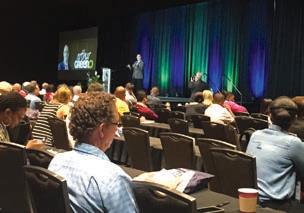
• Atlanta, June 10-13, 2021.
• Orlando, May 18-21, 2023.
• Las Vegas, June 9-12, 2025.
As a member or non-member, laundry-affiliated associations (ALM, TRSA, etc.) provide access to webinars, seminars (LinkedIn. com Training Seminars), textile management educational and leadership conferences, opportunities to listen and communicate with panels of experts within the industry, subscriptions to magazines with informative information, and laundry plant and equipment manufacturer tours.
Training workshops are interactive trainings where participants are involved in a number of “hands-on” training activities, rather than listening to a lecture
or presentation.
Webinars offer unique benefits to train employees because they are live, virtual events that are executed online. Webinars:
1. Save time and money in eliminating the need to travel.
2. Increase productivity.
3. Can keep track of who attended due to the log-in requirement.
4. The webinar process is professional and gives a good impression of company.
5. Increase employee engagement and can be viewed at all times because they are recorded and saved.
Employees obtaining certifications within the industry allow you to gain a competitive advantage and retain your best employees/managers. Certification is an investment in your employees, your career, your livelihood, business and your future.
UPSKILLING, RESKILLING
Upselling is a key word for professions today, especially in our industry, but a new urgent term for professional training and development is called upskilling, which is improving your current skills.
Employees are more enticed to join a company that offers opportunities to learn. They don’t have the time or money to invest in upskilling outside of work, so an employer offering this type of training will attract employees.
To boost morale, employee satisfaction and succession planning, training and development programs are now a must in order to retain top talent.
When an employee learns new skills so they can do a different job, this is called reskilling.
This will allow the employees to put themselves in a position to take the next step in their career path within the company, and that’s a win-win situation.
The employee receives a desired promotion, and the company gets to fill an important position with an experienced, skilled worker who has plenty of knowledge and can hit the ground running.
Upskilling programs can cost money, but provide ROI (return on investment). It is cheaper and often easier to tackle skills gaps in your company by training current employees, rather than hiring new ones.
There are costs involved when you have to replace employees due to the recruitment and hiring process, advertising the position, other individuals and manager’s time, which takes from their job responsibilities.
EMPLOYEE SELECTION, RETENTION
A couple suggestions for select-
ing good employees for training:
1. Talent attracts talent, so ask rising stars for their choices within the organization.
2. Create an operating system within the company where hiring managers/leaders can identify a rising star’s performance, not potential. This is not the HR department’s responsibility but the entire company’s responsibility.
3. Hire individuals not only for the position you are trying to fill—think about whether or not they can fill multiple positions from great leadership and training.
4. Before you make an employee training program, you must first determine what you want employees to learn and what you have in mind for their future at your company. If you are grooming an employee for a future management role, your company should elevate capacity such as: Good timemanagement and priority setting, dependable decision-making, willingness to take on more responsibility and good communication skills. Keep in mind the characteristics that make a rising star will differ between positions.
5. Create a mentorship program, through which you can delegate some staff development responsibilities out to your team.
Employees are your company’s greatest asset, so make sure not to treat to them just as a number. You must grow great people if you want to set your company apart, attract and retain top talent.
The next hurdle becomes retention of great talent after training. The best advice is to offer continued training opportunities. Some certifications require ongoing training programs that are performed in-house or externally. Companies can develop a system for
recognizing employee achievements.
Create a training program that is built on the values and goals of your company. Offer performance-based incentives (bonuses, extra time off, etc.)
A few performance-based incentives could include:
1. One (1) hour time off during the day in addition to breaks and lunch.
2. Flex-time off (work-life balance).
3. Alternative plans to benefit plans that include health and well-being support.
4. Student loan repayment assistance.
5. Social/off-work events.
6. Sense of purpose and appreciation on the job.
KEY TO SUCCESS
In order for our industry to succeed, managers/hiring managers need to make greater efforts of inclusion, supporting greater work flexibility and continued integration of digital and online tools that improve the experience of both staff and company’s clients. Companies need to work toward reflecting the world that its associates and clients live in.
In summary, the right employee training, education and development, at the right time, provides big payoffs for the employer in increased knowledge, contribution from employees, productivity and loyalty.
Employees join companies that make a difference and where the work brings out the best in them. In addition to working, they want to do work that matters; talented people want a chance to work with big problems and tough issues. They want that sense of purpose, to hit the ground running, seek to learn, contribute and develop their skills. ALN
Deana Griffin is president of The Griffin Group Inc.® She has 20 years of recruiting experience for the uniform and linen/ textile industry. She can be reached though the website www.thegriffingroup.cc

8 NOVEMBER 2019 | AMERICAN LAUNDRY NEWS www.AmericanLaundryNews.com
Continued from Page 1
Employee
Training options range from on-site webinars to educational sessions at industry conferences. (Photo: Matt Poe)
Griffin
Notice Anything?















InkGo® Is Now Odor Free!






InkGo has been reformulated to remove its odor… and to improve its performance.























InkGo is still the environmentally friendly,* safe way to remove ink stains from all types of fabric. It’s still great at removing autoclave tape and adhesives. And since it’s odor-free, InkGo is more pleasant to work with.




Does odor really matter? As more drycleaners position themselves as good environmental stewards, keeping chemical odors in the plant to a minimum can help them differentiate from their competition. And odor-free is a real plus if you’re working on ink for an extended period of time.





Now that’s worth noticing!
*InkGo is Biodegradable and is California Prop-65 and California VOC Compliant.










Become a STAIN WIZARD at ALWilson.com
To learn more, visit ALWilson.com or call 800-526-1188 A. L. WILSON CHEMICAL CO.


Extending linen life through selection, processing
BY MATT POE, EDITOR
CHICAGO — There are many crucial factors and cost centers when it comes to operating a laundry and linen service, but without textiles and linens, there is no service.
And if the textile product doesn’t last long as it is used and processed, customer satisfaction could drop and linen costs will increase.
So, how can a laundry extend the life of the linen it processes?
American Laundry News reached three textile experts— Steve Kallenbach, CMO-director of market solutions for reusable textile solutions provider American Dawn; Dan Schwartz, vice president of Fashion Seal Healthcare, a division of Superior Group of Companies that provides garments and ancillary apparel to the healthcare industry; and Bob Pestrak, sales director for Riegel Linen, a division of Mount Vernon Mills that provides textiles for the hospitality, healthcare and linen rental markets—to garner their expertise on extending linen life.
SELECTING LINEN
The first step to increasing linen life is to choose the proper textiles for the type of service. Kallenbach says that selection criteria are generally applicable to all markets and all types of textiles, whether industrial, healthcare, hospitality, or food and beverage.
“Typically, laundry textile buyers start with unit price, which is a good to begin with, as long as the rest of the picture is studied,” he says.
Kallenbach adds that other areas of analysis should be:
• Will the product be returned, or will much of it be lost or stolen?
• What is the processing cost vs. a current product?
• Who is the customer, and what are their real expectations?
• What does the competition offer?
• Beyond all of the above, what is the right product for the job intended?
Once a product is selected for “intention to implement into the supply chain,” Kallenbach says other factors should be considered, such as what is the actual spec of the product (content, weight, weave, thread count, cotton yarn type/size), so that comparisons can be fairly drawn.
“A comparative test should be
done to ascertain whether the product lives up to the stated quality, and also comparing different suppliers’ products equally,” he shares. “In comparing products, my life-cycle costing tool can be very helpful in understanding the real outcomes, as well as ascertaining the difference between price and cost.
“Bottom line: Know what you need, spec the product, test/prove the product, and finally establish the true lifecycle cost for a fair comparison of like products.”
According to Kallenbach, the most widely overlooked factor in product selection is the life-cycle cost.
“Many people simply buy on unit price,” he says. “In many cases, the lowest price can be the most expensive product.”
Schwartz agrees that there are many factors that go into the selection process, especially for garments.
“Yes, design is very important, but so is durability and value,” he says.
Schwartz goes on to say that for garments, polyester tends to provide more durability over cotton.
“In addition to providing better color retention, the polyesterrich garments in general should have great longevity,” he says. “Polyester-rich garments do tend to be more expensive than a cotton-rich garment, but when a laundry is successful at controlling losses, it’s most definitely a worthwhile investment.”
Pestrak recommends that laundries select goods from a textile company with a strong history of product development and manufacturing, and one that understands how the best materials and manufacturing standards can ensure a quality and consistent product that maximizes the laundry return on investment (ROI).
“Since there is a broad list of factors that can impact linen life and take it out of service, the laundry should ensure the textile company has an experienced technical support team that can work with their chemical dispensing company to trouble shoot problems and provide recommended solutions,” he says.
Pestrak shares that the primary efforts at Riegel Linen to extend linen life have been focused on the 100% polyester table linen category for laundries servicing the food and beverage restaurant and
hotel markets.
“This is the No. 1 product used in this segment,” he shares. “100% polyester will always last longer than cotton or poly cotton.”
However not all polyester is created equal, according to Pestrak. Spun polyester resembles cotton in the fiber state and has a softer touch than filament polyester, which is much firmer.
He goes on to says that table linen fabric should never be sanded, and a heavier product at 7.2 ounces will provide better cover and last longer than 6.4 ounces. In addition, stain release chemistry will enable many oil-based stains to wash out, and the dyes used to add color to the fabric should be resistant to chlorine residue.
According to Pestrak, the top factor that takes 100% polyester table linen out of service is that the color changes and fades after washing.
“The fabric will always last many more years than the color,” he points out. “White table linen turns brown or yellow, mid-tone colors like ivory and sandalwood can turn a rainbow of shades over time. Laundries then have to sort napkins and table cloths at the ironer so they can deliver shadeconsistent bundles to restaurants or discard colors that look terrible.”
An additional factor that should be considered in the selection process is how many fabric sources a vendor uses, says Pestrak.

“Fewer sources is better for product consistency,” he says. “Also how optical brightener, which makes polyester white, is applied, as this could impact whites staying white. Finally, the type of dyes and the dye process
used to match a shade, as this will impact colorfastness.”
Pestrak shares that Riegel Linen has colorGUARDTM technology, which is designed to withstand chemical residue left on fabric that causes discoloration of table linen.
“Laundries do not have to worry about using high concentrations of chemicals on white table linen to get it clean and prevent mold and mildew,” he shares.
“Also mid-tone colorGUARDTM colors are resistant to bleach.
Laundries will be able to keep table linen in service longer and improve their ROI and deliver shade consistent bundles to hotels and restaurants.
“We also have a Textile Service Team available to consult with laundries and their chemical dispensing company on ways to extend linen life.”
Pestrak says that the most helpful thing a laundry/linen service can do in terms of linen selection is educate the customer, especially when dealing with customerowned goods (COG).
“We see instances of hotels focused on design, buying retailgrade products that cannot stand up to the rigors of commercial laundering,” he shares. “A laundry can work with manufacturers that can help guide the customer to select table linen that is both innovative and durable.”
Kallenbach says that laundry operations can teach and assist their customers every aspect of the linen selection process.
“We have to be consultants to the business end-user,” he points out. “Showing them how to buy the right, durable product, becomes a win-win.”
“Something that often is over-
looked are the services a manufacturer provides such as customer support, a reliable supply chain and ample inventory which can all support a laundry’s growth,” says Schwartz.
He adds that linen suppliers are key partners when it comes to extending linen life, adding that linen and garment manufacturers need to remain committed to providing a quality product, and this means continuing to invest in and improve quality control processes.
“Even in our 100th year we continue to improve our quality processes,” Schwartz shares. “We constantly reject sub-par fabric that does not meet our standards before it ships to our cut and sew factories worldwide.
“We have multiple quality checks throughout the entire supply chain that ensure our customers get a quality, long-lasting garment. We also continue to invest in R&D to bring new higher quality garments to the marketplace.”
PROCESSING TIPS
Beyond selecting the right textile product, laundry services must properly process linens in order to get the longest linen life.
Schwartz says that recently his company’s laundry partners have been asking for higher quality garments at the request of their customers.
“However, a different garment may in some cases require a laundry to change their processes,” he points out.
“Our industry has incredible support from chemical companies,” Kallenbach says. “They are the experts in how to wash/dry/ finish product the longest wearlife.”
He recommends that when selecting a linen product, a laundry should bring in the chemical representative and have a threeway partnership discussion with textile supplier.
“If all parties analyze the product, a processing plan can be put into place that will garner higher profitability through longer life cycles,” Kallenbach points out. “Additionally, some textile suppliers offer free plant audits, which can be very helpful in maintaining both textile and machinery life, as well as best practices for the laun-
10 NOVEMBER 2019 | AMERICAN LAUNDRY NEWS www.AmericanLaundryNews.com
Experts say laundries need to use proper selection criteria, processing methods to achieve textile longevity
See LINEN on Page 12
Experts say long linen life begins during the selection process. (Image licensed by Ingram Publishing)













Engage laundry staff for more satisfied employees
 BY MIKE HAND
BY MIKE HAND
HOUSTON — Why does Monday seem so far from Friday, but Friday so close to Monday? Or why does time fly on the weekend when you’re not at your place of employment, yet drag on Monday and the remainder of the work week?
The answer is all too predictable: Many employees dread Monday mornings, and for good reason. Their job is simply a way to earn money. It’s not something they enjoy. For too many, it’s the start of another work week with five long days before the weekend and the satisfaction and simple joy that comes with time off.
But you can make the job fun, or at least more enjoyable. And the good part is that doing so will help you increase employee satisfaction, and thus help you keep staff members who are dependable and responsible.
For the on-premises laundry (OPL) business, it’s even more important to keep employees engaged in their job, since the industry, particularly in nursing homes and hotels, faces high turnover for the simple reason that laundry is not a sexy business. In fact, doing laundry is usually about the last job that anyone wants. But it has to be done, and if you find a good laundry employee, you need to add benefits that will make him or her want to stay.
I don’t think anyone has totally figured out how to engage laundry staff, but there are definitely things you can do to win the battle with high turnover rates.
First, give employees incentives to do a good job. Make it a competitive situation, and give them some type of reward—financial or otherwise—if the in-house laundry is running efficiently, on-time and within the allotted parameters.
Maybe you give employees an extra $12 a day for meeting the standards. That’s only $1.50 extra an hour for an eight-hour shift,
Linen
dry associates involved.”
but that equals an additional $60 a week or $240 a month. And that’s a lot of money—and a lot of incentive—for someone who may be earning between $10 and $12 an hour.
Along that line, have a contest or competition. For example, around the Super Bowl each year, we run a competition within our service department and will give away a 55- or 65-inch television. A chance to win a big-screen TV can create a lot of motivation for employees to excel in their jobs.
Third, give employees the proper training so they know how to do their job well and understand things such as what is the correct load size. The training doesn’t have to be extensive— usually an hour is sufficient—but it should be enough to help them understand what happens when they cut corners or don’t pay attention to quality.
Don’t just use YouTube videos for your training; create your own
training methods that include “here’s why we do it this way and here’s the result when we don’t.”
You need to make sure your laundry employees understand that even the “little things” can have a big, and negative, impact in the laundry operation.
Fourth, allow employees time to get out and walk the floor of your nursing home, hotel or other facility. Have them see and meet the residents so they remember that there are faces attached to the items they are laundering and sending out the door each day.
Let your laundry employees get engaged with the nursing home residents and find out how they like their laundry done. While they can’t engage with hotel visitors since they mostly change on a daily basis, remind your laundry attendants to take pride in the fact that they are the ones washing the linens that people are sleeping on.
Are the sheets soft, or is it like
sleeping on cardboard? Are the towels soft, or do they feel like sandpaper? Soft sheets and towels are a big part of the service that hotel guests expect, and it’s easy to forget how important a role laundry plays into a hotel’s services.
Fifth, treat your employees like they matter, because they do. Provide them with decent benefits. Let them know you recognize they are doing a good job. Be friendly and a team player who is willing to help out at times.
Everyone likes to be appreciated. Keeping the job enjoyable will make it more fun, which makes it easier for people to show up for work on a Monday morning.
And perhaps most importantly, make sure they have quality laundry equipment that will allow them to do their job well.
You need up-to-date laundry equipment, but too often, the laundry
he shares.
points out.
Pestrak says the best way to clean linen is to follow the recommended wash procedures for a specific product and optimize the time, temperature, chemicals and mechanical action in the wash cycle.
“The textile and chemical dispensing company can provide guidance on this,”
Pestrak goes on to say that the leading cause of reduced table linen life in laundry processing is an insufficient neutralization, which causes chemical residue to be left on fabric that is then exposed to heat at the ironer, and the color changes shade.
“Since products get washed hundreds of times and one wash can alter the shade, it’s important that the most sensitive colors, like white and some mid-tone colors, are engineered by the textile company to withstand an insufficient neutralization,” he
“The factors our Textile Service Team comes across most often are grouping of like shades in the wash, ensuring a sufficient antichlor and sour in each wash, iron in the water, following proper machine loads, monitoring the pH at various steps in the laundry process, and the temperatures and speed at the ironer.”
FINAL ADVICE
In summary, to get the most life out of linens, Kallenbach says it’s important for
room is the last thing added when designing a new building.
While UniMac’s TotalVue technology is more of an owner’s tool rather than an attendant’s tool—it gives managers and executives complete visibility to key performance statistics in their laundry operation—you need to share that information so your laundry employees learn how they can be more efficient on the job.
In the beginning, that means sharing the utilization, efficiency and throughput statistics on a weekly basis with your laundry manager or staff, until you are getting rates in the 90-95% range. Then, you can move to a monthly report to ensure you maintain those rates.
So, go to your laundry staff and say you’re only using the equipment at 75% of capacity and that means you’re not being efficient. Tell them how to increase their efficiency and throughput, and that will help decrease downtime, labor and operational expenses.
Don’t forget to also share this data with the maintenance staff. Let them know when there are error codes—such as when the bearings need greasing—so they can ensure your laundry equipment is operating at an optimal level.
Really, it all comes down to increasing your utilization rates and decreasing your downtime and operational expenses. In short, higher performance, lower costs. And it is so much easier to do that if you have engaged and happy laundry employees. ALN
Mike Hand is general manager

of the Commercial and Coin Laundry Equipment Co. (CLEC) Texas, a UniMac distributor in the Houston area. Hand has more than 25 years in the commercial laundry industry. He can be reached at mikehand@ clecco.com or 281-9611627. Hand
a laundry/linen service to compare linen products fairly through spec. When testing, he recommends doing so in a controlled setting or with a third party, and to utilize life-cycle costing.
Finally, Kallenbach recommends making a connection between a laundry’s production staff, the textile supplier and the chemical supplier.
“Textiles continue to make advancements, so be open to evaluating and testing new technologies and solutions that can extend linen life,” concludes Pestrak. ALN
12 NOVEMBER 2019 | AMERICAN LAUNDRY NEWS www.AmericanLaundryNews.com
Author identifies ways for on-premises laundries to ‘win the battle’ with high turnover rates
(Image licensed by Ingram Publishing)
Continued
from Page 10
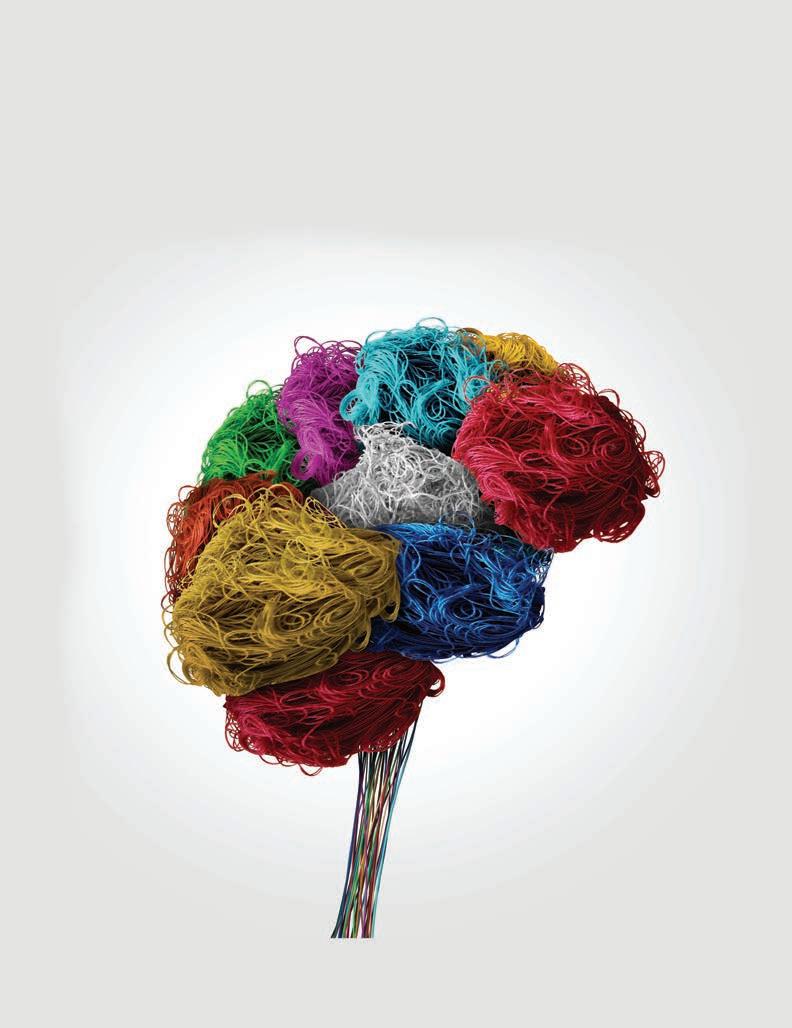














2008 DM installs Madison Square Garden
2009 DM installs laundry for the 2009 World Series Champions
2009 DM installs laundry for the 1986 World Series Champions
2010 DM installs 500TH Milnor

2011 DM installs laundry for the 1994 Stanley Cup Champions
2012 DM adds 10TH Technician







2013 DM wins Maytag Star Performer Award

2013 DM installs 10TH Tunnel
2015 DM installs laundry for the ‘80, ‘81, ‘82 & ‘83 Stanley Cup Champions at Nassau Coliseum
2015 DM installs laundry for the ‘80, ‘81, ‘82 & ‘83 Stanley Cup Champions at Barclays Center
2015 DM opens Boonton, New Jersey office
2016 DM installs CBW Tunnel for Montefiore Medical Center
2016 Ron Receives most prestigious President’s Award from Milnor and Chicago


2016 DM Celebrates 50TH Anniversary and has best year with Milnor
2016 DM is Fulton’s #1 Dealer in the tri-state area
2018 3RD St. Regis Laundry renovation (see 1967 and 1988)
2018 Blayne Hirsch, daughter of Ron and granddaughter of Andy, joins DM Sales
2018 DM installs 25TH FD
2018 DM installs 30TH Tunnel
2018 DM has best year yet with Chicago Dryer
2019 DM installs 1,500TH Milnor washer
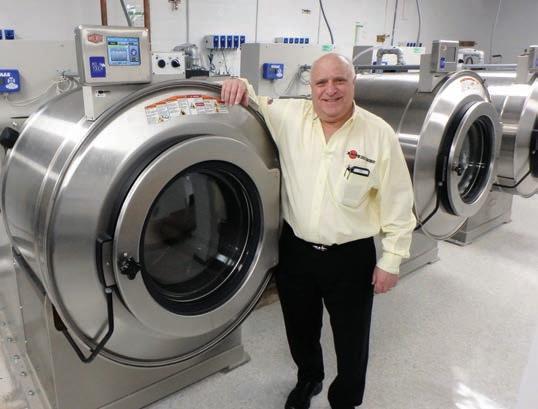
years and counting...
Direct Machinery is now Milnor’s #1 Dealer in New York and New Jersey












Andrew irsch opened his one-man dream shop 53 years ago. Today, with 6 employees, Direct Machinery is now ew ork metro’s most trusted dealer for Milnor laundry equipment. rom design, planning and layout, to installation, service and parts, no other company has greater talent, resources and e perience. Whether you process 60lbs hour...or 160,000lbs day...you can rely on Direct Machinery and Milnor today, tomorrow and for many years to come. or a laundry production analysis, simply ‘Go Direct’ by calling (516) 938-4300.
 Ron Hirsch, President Direct Machinery at the recent Hyatt Regency installation
Ron Hirsch, President Direct Machinery at the recent Hyatt Regency installation
Local Service. National Strength. for 53
©2019 DMA, LLC. All rights reserved.
ACCOMPLISHMENTS NY Metro’s Largest Factory-Trained Technician Team! DIRECT MACHINERY The Laundry Professionals 50 Commerce Place, Hicksville, NY 11801 • 1-800-572-5573 www.DirectMachinery.com • info@DirectMachinery.com For the very best in Sales, Service, Parts, as well as New and Reconditioned Equipment, it pays to “Go Direct!” 1966532019
National Strength. Local Service. for 53 years and counting...
1966532019
1966 Andy Hirsch leaves Washex and opens Direct Machinery

1967 DM installs washers on 11TH oor of ni ersity Club via crane (see 2000)
1967 1ST St. Regis Hotel Laundry renovation (see 1988 and 2018)
1968 DM becomes Chicago Dryer dealer
1979 Ron Hirsch, son of Andy, joins DM Sales



1980 DM opens Connecticut Sales Territory

1981 DM is #1 Washex dealer
1984 Ron promoted to VP Sales
1985 DM sells its first CBW Tunnel to FDR Services
1985 DM purchases , sf Headquarters in Hicksville, Long Island
1988 2ND St. Regis renovation with all new equipment (see 1967 and 2018)
1991 DM wins Chicago’s Sales and Service Achievement Award
1991 DM Celebrates 25TH Anniversary
1993 DM installs Marriott Vista Hotel laundry in the World Trade Center
1998 DM becomes exclusive Milnor Dealer for N NJ
















1999 DM recogni ed for 1ST ear ales y Milnor in just six months
1999 DM installs CBW Tunnel through Grand Central Station
1999 Ron becomes President
2000 DM installs CBW Tunnel at Town Sports International
2000 DM renovates laundry on 11TH oor of ni ersity Club and delivers Milnors via crane (see 1967)
2007 DM installs laundry for uper Bowl Champions
Direct Machinery is now Chicago Dryer’s #1 Dealer in New York and New Jersey ©2019 DMA, LLC. All rights reserved.
With Chicago Dryer, America’s oldest finishing equipment manufacturer, Direct Machinery has helped hotels, motels, assisted living facilities, hospitals, and commercial laundry businesses grow more profitable with new, efficient flatwork machinery. Whether you need just an ironer for tablecloths, a small piece towel folder, or an entire plant of feeders, ironers, folders, sorters and stackers, you can rely on Direct Machinery and Chicago today, tomorrow and for many years to come. Put our strengths to work for you. ‘Go Direct’ by calling (516) 938-4300. ® NY Metro’s Largest Factory-Trained Technician Team! DIRECT MACHINERY The Laundry Professionals 50 Commerce Place, Hicksville, NY 11801 • 1-800-572-5573 www.DirectMachinery.com • info@DirectMachinery.com For the very best in Sales, Service, Parts, as well as New and Reconditioned Equipment, it pays to “Go Direct!”
Ron Hirsch, President Direct Machinery at the recent Arrow Linen installation
FIVE DECADES OF AMAZING ACCOMPLISHMENTS
PANEL OF EXPERTS
Operating a more cost-efficient laundry
tional washers to a tunnel system can usually be less than three years if you are processing 3 million pounds or more annually.
Tunnel washers also wash faster than conventional washers, so that means less time to process the goods, which leads to more labor savings.
Staying on top of utility, operational and labor costs is a never-ending battle for laundries.



Laundries that fail to keep these costs down run the risk of being competitively disadvantaged to their competitors, which means they might have to charge more for their services, or worse, go out of business altogether. Therefore, keeping up with business-related costs is a never-ending, necessary battle for a thriving laundry.
For utilities, perform scheduled preventative maintenance on your equipment. Preventative maintenance will keep your equipment in top operating condition and may reveal why a specific utility cost is trending higher.
Simply walking your laundry after operating hours can allow you to hear air leaks that keep compressors running, water leaks and/or steam leaks, which keep energy costs high. Consider LED lighting for your plant if you are not using it now. The ROI for installing LED lighting can be quite appealing in many cases.
Make sure you have washing equipment that utilizes low water consumption without compromising wash quality. Keep an eye on your utility costs each month; if you notice spikes, you know that you might have a leaky water valve that needs to be fixed or some other problem that needs to be addressed.
If your plant uses open-pocket washer-extractors or side loaders, you might want to consider a look into a water reclamation system so that you can reuse some of that water to cut city water and sewer costs.
Labor costs are on so many operators’ minds right now, so consider using equipment that reduces labor costs. While tunnel washers use considerably less water than a conventional washerextractor, they also require much less labor to run the system. Therefore, an ROI from conven-
Always remember to annually review insurance policies to make sure you are getting best pricing for your coverage. Many businesses forget to review insurance policies, and it can hurt them when disaster strikes—and just by paying too much unnecessarily for their policy.
Review your business taxes with your accountant to make sure you are using the full tax code to your advantage. In many cases, buying new equipment that saves on utility costs also come with tax breaks; make sure you are using this feature of the tax code.
Search and apply for grants that might help in providing money to buy new equipment that you need in your plant. Finding people who know how to write grants is easy, and it is a low risk but high reward if you get the grant.
have a stain just be sent back to the soil room to get rewashed. If the stain doesn’t come out, it gets sent back again and starts the cycle all over again. This stain cycle can really bog a laundry down. A laundry must wash the linen, stain wash any rejects and then rag the linen out if a stain remains.
3. Always look to squeeze your hours. Don’t allow machinery to be turned on early or left running when the day is done. Air compressors and boilers are notoriously turned on early and left running late. This habit is a tough one to break and can cost you a lot of energy throughout the year.
4. Use a proper preventive maintenance/predictive maintenance system. A huge part of increasing production in the plant and saving money is ensuring the equipment is running correctly. There are numerous good preventive maintenance systems around. These systems help ensure that your maintenance schedule is being properly run.
It also helps you schedule predictive maintenance projects, such as air cylinders that are made for a definite number of cycles until they need to be replaced. Replace them before they shut production down. Decreasing production downtime should always be priority for your management and maintenance staff.
No matter how small or large a laundry is, there are some key areas to watch that can really save some money:
1. Ensure you are loading your washing equipment with the proper poundage. When you under load your machinery, you will increase the water and steam usage for that load, and it will also cause you to run more loads to get your poundage through the plant. These increased loads through the plant will increase your chemical usage.
Small loads coming out of the washers will mean small loads going into your dryers. Small dryer loads usually take longer to dry than proper-sized loads do.
2. Keep a close eye on your rejects. I have seen linen that may
Running a cost-efficient laundry is an ongoing process. While the devil can be in the details, the details are critical.
There are many factors to consider, including, but not limited to, the following:
• Cross Training—Every employee, regardless of their objective should have an opportunity and an obligation to learn additional roles. The payoff is critical, especially in times of staff shortage, such as vacations and inclement

weather.
• Reporting—If you can’t track, you can’t measure the success of a process. Manual reporting and up-to-date software will provide critical insight regarding the daily operation.
• Laundry Equipment Purchasing and maintaining reliable, energy-efficient equipment is paramount to the success of the laundry operation.
• Planned Maintenance (PM) and Service Contracts—The return on the investment can reduce downtime and increase longevity.
• Parts—Maintaining a small inventory of “frequently used parts” for fast replacement, without incapacitating production.
• Scheduling—Planning for cyclical periods to include sparse and peak periods.
Mike Horne, director of engineering for The Westin Peachtree Plaza Hotel in Atlanta, is very familiar with the importance of managing cost without sacrificing quality in his daily operation of this bustling five-star hotel.

Below are several “best practices” Mr. Horne employs in no particular order.
He reviews lighting to make certain all lights are LED and spaced appropriately for the associates’ ease of working.
Horne routinely reviews steam pipe insulation to confirm they are still in good shape. Steam lines generate a massive amount of heat and trying to overcome that heat with air conditioning is tough to do; thus, he wants to insure all piping is insulated well.
He often checks with the mechanic or contractor to insure all steam traps on the ironers are working as they are designed.
Steam condensate backing up or not flowing as it should affects the operation of the ironers. This is a major part on the machines that has to work effectively.
Additionally, Horne reviews the canopy covers on ironers to ensure they are in good condition (holding in the heat from the ironer and not being vented into the room), making certain each exhaust fan is working as it should to remove this heat.
When purchasing new
machines, he seeks high-efficiency motors for the best operation.
Regarding planned maintenance, Horne says, “Nothing takes the place of a PM program. It is the most important item when dealing with laundry operations. The equipment (which can run into hundreds of thousands of dollars) must be maintained. The investment that companies make must be preserved, and there is no substitute for a good preventative maintenance program.
“Keeping lint out of equipment (especially air-cooled machines) can prevent catastrophic issues such as fires and premature failures, which I have personally witnessed.”
According to Horne, a water reclamation system, such as the one Westin uses, can save the company thousands of gallons of recycled water for the washers. On average, about 70% is recycled.
I am confident the readers have employed many of these as well as other best practices to ensure you run a safe, effective and efficient laundry.
Individual tasks that represent potential to reduce costs in a laundry, ranging from enforcing production standards to bidding out textiles and supplies, are just about limitless. These types of efforts are certainly worthwhile and will save money; however, for the purpose of this response, I suggest a more strategic, processoriented approach based upon Lean principles.
There was a time when someone would mention Lean to me and my first reaction would be, “I’m not building cars here, I do laundry for a living!” Only after I read up on the subject and visited a few plants that had “leaned” out their processes did I learn how impactful, and most importantly, sustainable Lean-based improve-
16 NOVEMBER 2019 | AMERICAN LAUNDRY NEWS www.AmericanLaundryNews.com
“Operational costs, like utilities and labor, are constantly rising. How can I reduce expenses? What strategies do you recommend to run a more cost-efficient laundry?”
See EXPERTS on Page 21
Equipment Manufacturing
Supply Distribution
Brock Pellerin Pellerin Milnor Corp., Kenner, La.
Equipment/
Janice Ayers Davis
TLC Tri-State Laundry Companies, Valdosta, Ga.
Commercial Laundry
David Griggs Superior Linen Service, Muskogee, Okla.
Consulting Services
Sam Spence TBR Associates, Saddle Brook, N.J.
Your table linens touch every Customer at every event. Your linen needs to speak their language… fresh, clean, safe, consistent, reliable, and yes elegant. They count on it.

Together, ADI and Milliken have set the standard of linen excellence for decades. USA made Signature Plus fabric. Soft luxurious hand, consistent long-lasting color. Whites that stay white, and colors that stay bright.
ADI American Dawn. The world’s leading supplier of Milliken Signature table linen products. Count on us.
Signature Plus is a registered trademark for Milliken & Company for fabrics.


800 821 2221 | imagine@americandawn.com | americandawn.com
COMPLETE YOUR TABLE WITH MILLIKEN LINENS BY ADI
Sorting through new laundry textiles
especially with the decreasing oil costs, although it jumped up again. Also, it doesn’t breathe as well.”
BY MATT POE, EDITOR
RICHMOND, Ky. — Textile suppliers are constantly coming out with different fabrics with new construction and properties.
So, with all of the new textiles coming out, how is a laundry and linen service supposed to choose the right product for its customers and operation?
Duane Houvener, national manager of value-added solutions for reusable textile solutions provider American Dawn, discussed how to approach new textile products during the recent Association for Linen Management (ALM) webinar The Textile Trap
NEW FABRICS AND THE MARKETPLACE
Houvener points out that laundry is “a science,” and letting customers know about the science involved will help them understand what a laundry/linen service is trying to accomplish for them, especially when new textiles enter the market.
“When those new textiles come along that they want, or that they think they want, knowing the science, you’ll be able to explore, to explain the effects of our industry on the items that they’re looking at,” he says.
This includes sharing the “wash pie” of time, temperature, chemicals and mechanical action. And that means laundry personnel need to be educated as well.
“The more you know, the better you can communicate, there’s no doubt about it,” says Houvener. “If you want them to buy what you’re selling, you have to believe what you’re saying. So, the more you talk about these things, the more you learn about it, the more confident you’ll become with it, more confident to your customers or potential customers about it.
“The more understanding they will be of our situation and some
of the new textiles that are available out on the on the market today, and why some of them may work and some of them, they may not, and why they should work with you.”
Houvener shares that while there are many fabrics in the marketplace, laundry personnel don’t necessarily have to know all of them, just be aware of them—and whether they’re natural or synthetic. That’s because those are the two general categories of fibers.
“Most people don’t understand or don’t realize all the different compositions,” he says. “Most things today are still made up of the big four: cotton, polyester, rayon, some nylons. The last three, of course, being synthetic, and we haven’t really varied from that, yet.”
Houvener says there are new natural fibers on the market gaining popularity, such as hemp and bamboo, but widespread use isn’t likely to happen for some time. So, textiles are typically made of the four, either exclusively or in a mixture, each reacting differently in an industrial laundry.
So, according to Houvener, it’s important to understand the characteristics and processing needs for the different types of textile compositions when new products come along.
For example, he says cotton is associated with comfort, softness and breathability. It’s relatively inexpensive, and it’s easy to dye.
“It’s versatile,” shares Houvener. “It’s used for so many different types of textiles, and has been just about forever, and endures high temperatures pretty well. On the flip side, it wrinkles really easily. It’s very fickle. You can’t let it sit for very long, especially with any weight involved because it wrinkles really easily, and it loses content with each processing—it creates lint—a little bit more comes out, which means that it shrinks.”
Polyester, he says, has increased product life. It’s a synthetic fabric derived from crude oil. It lasts for a long time, decreased wrinkles, doesn’t shrink, doesn’t fade and it wicks moisture.
“Unfortunately, the general public still has a negative impression of polyester,” he points out. “We think of Uncle Leo’s polyester suit. It’s still perceived as not as comfortable. It’s more expensive, but it has been decreasing in price,
In terms of processing, Houvener shares that polyester is high-temperature intolerant, and it has very strict sorting and processing guidelines.
“You have to keep it away from the cotton, out of the cotton loads, because the cotton has more temperature tolerance and is probably being washed in the higher temperature,” he points out. “So, if it gets in with the cotton and a higher temperature, it doesn’t have a positive effect on the polyester textile.
“You’ve really got to sort properly. You’ve got to process it properly. That’s a team effort between your laundry, your chemical provider and your textiles provider, along with the equipment provider.”
Finally, blended textiles are made up of a mixture of natural and synthetic fibers, Houvener says.
“Just about everything is available in blended, but it still lints, though,” he points out. “All of us are probably familiar with a cotton-poly sheet that has been in the system a long time, and you can just about see through it because all that is left is the polyester. Most, if not all, of the cotton has gone. Every time you process it, that cotton comes out of it, and you lose a little bit of it, and that’s the lint.
“It’s not as wrinkle resistant, and it’s not as stain resistant when it comes in colors, but it still is more wrinkle or fade resistant than 100% cotton. It still has a little bit of the cotton feel, which customers like.”
Besides fiber type, Houvener says factors such as thread count and weave impact quality and processing needs.
“We’ve heard of some of the new high thread count sheets, ultra-luxurious, really soft, but keep in mind how they affect your system,” he shares.
“If you go from a standard twin or a standard sheet that’s a T130 to that same size sheet but it’s T180, it will feel softer. It’ll look better. It’ll last longer, but it will weigh more. Depending on how you charge your customers, it could cost them more. So, to have that same size sheet that basically does the same job may be costing them more.”
Like thread count, Houvener says weave patterns affect strength, longevity and the feel of it.
“We’ve placed a big role in the satisfaction of the customer and the feel of those textiles, whether it’s something you’re using now or some new textile, but you have to get the most out of what you’re purchasing,” he points out. “You have to make sure that the right one is in the right place at the right
time, and make sure that the users understand the uses of all these different products.”

Houvener stresses that a laundry has to make sure its expectation of what it’s providing meets customer expectations—and that the products are being used for the proper tasks.
“Make sure items that are supposed to be used for cleaning are being used for cleaning,” he says. “Schedule training for key groups of people to talk about the construction of the linen products, so you’re getting proper use and linen awareness for your customers.”
TEST, TEST, TEST
So, with all the new textile products that come out and pique interest in laundries and their customers, what does Houvener recommend when it comes to analyzing and implementing new textile products?
Test, test, test.
He says it’s vital to test wash all new products in the plant. In fact, test them in every plant an operation has.
“It may vary then from the plant a hundred miles away because of different equipment, because of different chemicals, you name it,” he says. “There’s nothing that can simulate what happens in your laundry better than what happens in your laundry.
“Test wash everything. Thread counts, weights, find out how those affect production. You increase the weight, it not only affects the cost to the customer, but it has an effect on production.”
For example, Houvener says, an operation is using a 110-pound washer-extractor, and it’s processing 110 1-pound sheets. Then the operation shifts to a 2-pound sheet.
“Guess what? Now, you’re only going to get 50 of those sheets into that 110-pound washer,” he points out. “So, the weight not only has an effect on the cost to the customer, but also on the production, so
you’ve got to measure that as well, anytime you change the numbers.”
New products with zippers and buttons can also have an impact on processing and use, says Houvener. How? By adding extra time to zip zippers and unbutton buttons.
“I know it takes a little bit of extra time, and we talk about productivity, but it will make your linen last longer,” he says. “Those zippers are very sharp. They have a negative effect on the other items that are in that washer, in that dryer.”
Fastened buttons, Houvener shares, pulls on threads during processing.
“That’s, probably the No. 1 reason that buttons come unraveled off of shirts or off of garments, whatever the case may be, because they’re buttoned during washing too much and makes the thread that’s holding the button in place prematurely fall off,” he says.
“So, if you can take the time to unbutton buttons, they will last longer and you’ll save time having to replace, resew on buttons.”
It’s all about doing the legwork, according to Houvener. When customers have special items they want to use, he says the laundry should go out, find the item and test it.
“If they find that other slider, if they find that new bedspread, if they find those new scrubs that they heard about, your current vendors probably have something like it,” he recommends. “That will help ensure it’s industrial-laundry compliant. Do the work for them.
“Don’t ask them to go out and find it, but if they do, do a realworld test washing and provide that back to them so they can see the negative effects of industrial laundry on the noncompliant linen products.”
Houvener says that it’s a valueadded benefit for a customer when the laundry does the legwork.
“They’ll appreciate it, and you’ll

18 NOVEMBER 2019 | AMERICAN LAUNDRY NEWS www.AmericanLaundryNews.com
Strategies to analyze new linens, select the right options for customers, the laundry
See TEXTILES on Page 24
(Image licensed by Ingram Publishing)
It’s important to test new textiles in a plant to ensure it performs as advertised. (Image licensed by Ingram Publishing)
PRODUCTIVITY







DOESN’T HAPPEN BY ACCIDENT.










At your facility, your production is strategic. It’s scheduled. It happens on every shift, every day. And you don’t like surprises. It’s why we bring you purposeful engineering in powerful machines built to help your facility perform at its peak — because we don’t like surprises, either. Maximize your productivity with the help of Maytag® Commercial Laundry by your side.
GO WITH THE NAME YOU KNOW



Visit us at MaytagCommercial.com






























*This promotion is valid for applications received by Eastern Funding between October 1 and December 31, 2019, and funded by February 15, 2020. Visit maytagcommerciallaundry.com for complete promotional details. ®/™ © 2019 Maytag. All rights reserved. Financing as low as 4.99% FOR 36 MONTHS*
Zeroing in on transit advertising
BY KIM LODERBAUER
OSHKOSH, Wis. — One of my favorite ways to market commercial laundries is via the transit billboard.
Transit billboards—on buses, trucks, delivery vans, taxis, subways and light rail trains—can advertise in places where stationary billboards can’t.
But, like stationary billboards, these ads can extend for a few
days, weeks or months, and target specific geographic areas, such as those dense with hospitals or hotels.

Typically, the vehicles that carry these transit ads tend to follow specific routes and offer strategic placement either outside and/or inside the vehicles to capture the attention of passengers, other drivers, businesses and pedestrians along the street.
They can also deliver your message in the same neighborhood
or proximity as other competing commercial laundries, and in and around bustling medical parks or hospitality-rich areas.

Transit billboard exposures can serve multiple goals. At CCS, we employ them for short-term, special-event promotions and long-term brand awareness.
Broad market coverage results in relatively low-cost ad repetition and lots of daily impressions.
Remember that good negotiation can bring extra value.
Oftentimes, newbie advertisers can procure special deals, rates or packages, and with them more bang for their advertising buck.
Read on for some tips on transit advertising …
Location: There are different placements for ads, depending on who you want to target. Do you want to target the people getting on a bus or train at stops located near hospitals and medical clinics, driving in traffic or pedestrians on the street?
For example, if you want to target traffic, advertise on the driver’s side or tail of the vehicle. If you wish to target passengers, advertise near the exterior passenger door or inside.

Quick Read: Less is more, especially when it comes to transit advertising. Moving ads are a quick read, so keep the message simple, short and sweet. Your message should be clear, easy to read from near and far, and, most importantly, easy to remember.
Colors That Stand Out: The ad should pop off the vehicle. Don’t design an ad that’s the same color as the vehicle itself. Know the colors of the vehicles you are advertising on and design your graphic and message accordingly.
More Visuals: Make your design memorable by using graphics that “wow” the viewers. Use more graphic elements and less words. Incorporate elements of the vehicle into your design, or go to the extreme and extend your design outside the standard advertising space.
Size: Deliver maximum exposure with your ad. Remember that your ad needs to be visible to drivers and pedestrians, so make sure to size it appropriately. Command your audience’s attention with large, creative ad elements.
Type of Ad: Wrap advertising differs from transit billboards because wrap advertisements typically envelop all of the vehicle, or a large portion of it. Many commercial laundries with pickup and delivery services will use a full van wrap to advertise those services.
Transit billboards are large flat surfaces, like traditional billboards, that adhere to vehicles and can be changed out as necessary.
Quality Designer: Don’t go price shopping on the internet for some random person to design your laundry’s transit billboard, and don’t do it yourself. Choose a qualified, local vendor who can design and install the ad on your behalf.
Frequency: Determine the length of time your ad is to run based on your goals. If you’re advertising a promotion, it might only run a few weeks or months.
If you’re advertising hospital or hospitality laundry service, it can run for months or years. Just be sure to freshen it up now and then so it doesn’t get stagnant.
At CCS, we’ve found transit advertising can create interest, reinforce a brand and garner new customers looking for better, more convenient service. ALN
A 20-year marketing veteran, Kim Loderbauer works closely with commercial laundry owners every day – helping them cost-effectively promote their businesses. She manages Continental Creative Services (CCS), in Oshkosh, Wis., an advertising and marketing firm serving the laundry industry. Contact her at kloderbauer@cgilaundry.com.

20 NOVEMBER 2019 | AMERICAN LAUNDRY NEWS www.AmericanLaundryNews.com
The Most Comprehensive Guide to Industry Operations Laundry Operations and Management FIRST EDITION $125 members / $195 nonmembers Multiple-copy purchase discounts available 877.770.9274 or 703.519.0029 • info@trsa.org www.trsa.org/store Laundry Operations and Management provides an overview of
aspects of laundry operations:
on procedures, technologies and transactions of
sales and service. It is the only resource that
manager and
ects
the laundry process.
else will you nd
insights for industry newcomers and veterans alike
industry best practices for processing linens, uniforms and other items. Easy-reading, illustrated 200-page text describes equipment, supplies and techniques for every stage of laundering: Soil Sorting ð Washing ð Drying/Finishing ð Packout ð Delivery Plus an industry history and chapters on maintenance and textiles. Laundry Operations & Management is the o cial text of the TRSA Production Management Institute (PMI). “Individuals new to the business receive a great base to begin their careers. Veterans nd answers to questions that would be very hard to gure out if they didn’t have this resource.” —Tim Radtke, CPLM, Plant Manager, Morgan Services, Chicago ALN_JrPg_0919.indd 1 9/5/19 1:50 PM ALN_Jr Page.indd 1
all
a primer
production,
explains how every
employee a
every stage in
Nowhere
as many
about
ments can be.
The most basic principle here is to identify the steps in our process that represent value to our customers. Value-added steps in our process are strictly defined as:









• The customer wants it and is willing to pay for it.
• Changes form, fit, function of the product.
• Is not rework.
If a step in the process does not meet all three of the above criteria, it is considered to be waste.
Although value-added time makes up a very small portion of the overall time in a process, organizations too often focus on reducing the value-added rather than the much larger non-valueadded portion (waste). By focusing on the non-value-added steps in our process and reducing waste, you can have a much greater impact.
Focus on the “Eight Deadly Wastes” as defined below.
Transportation—Moving work where it needs to go. This can mean pushing a cart or a sling from one area of the plant to another, as well as fleet transport.
Inventory—Anything beyond what’s immediately needed to fill orders. This can be new product in stock and processed goods in the plant.
Motion—Movement that doesn’t add value or is unsafe. This can be symptomatic of poor layout and poor organization.
Waiting—Idle work, equipment and/or people.
Overproduction—Producing excess product before it is needed.
Over processing—Unnecessary work steps, inconsistent processes, design that ignores customer.
Defects—Work that needs to be scrapped or reworked, such as ragout or rewash.
Underutilized people skills Wasted ideas, skills, capabilities. Lack of employee empowerment. A helpful tool often used to identify value and waste is to perform a process-mapping exercise. With a process map, you plot out every step in your plant from the time soiled linen arrives in your sorting department to the time clean linen is packed out.
Then identify the value-added steps that meet the three criteria mentioned above. Every step that does not meet the value-added standard is waste. Complete this exercise and you will quickly see how much waste exists in your plant!

Lean is not just for heavy manufacturing anymore. Any labor- or capital-intensive process can benefit from implementing Lean principles.
J
ust the other day while going through my mail, I noticed
that I had an unusual amount of mail pertaining to third-party energy suppliers for electric and gas. The message and intent with these mailings was that they can save me money on my household expenses if I switched from my service from our current supplier



to them—guaranteed! I must admit, who doesn’t like to save money?
Then the next day while working from my home office, I received a phone from a solicitor telling me that I was overcharged by my secondary supplier on my electric bill and was entitled to a $125 rebate and I should press 1 to redeem my rebate check.
Excited about getting my rebate check, I immediately hit 1 on my phone and told the caller to process check to my home address.


When I would not reveal my account numbers or home address to the caller, he immediately hung
up on me. Surprise, surprise. Realizing from the get go that I do not use secondary suppliers, I knew the call was a scam. This call however started to make me think about other ways to save money on my home utilities, etc.



Running any business today, it can be, and is, an expensive proposition, especially when it comes to managing our utilities: electric, gas, waste removal and even labor. We need to be smart and innovative when it comes to finding ways to save money and reduce costs.

Budget plans and locking in pricing for a period of time or year is one way to keep your costs

for utilities under control and within budget. By working closely with your local utility companies, you can pretty much guarantee what your monthly bills will be once you negotiate and lock in your rates for a year or more.
This tactic can easily be done and should be done with all utility providers. Also, many utility companies today offer free audits on your business and/or home to offer what can be done to save and reduce energy costs.
Another way to save money is to go to LED lighting. LED

•
Smoothflow®
•
Performance Efficiency Safety ISO 9001 Certified gabraun.com
PERFECT COMPLIMENT TO ANY BATCH TUNNEL WASHING SYSTEM. MAKE A LASTING IMPRESSION WITHOUT LEAVING A MARK.
THE
Extraction Press
Hydraulic design provides superb efficiency and longer time under high pressure per tunnel cycle
Exclusive Parker Hannifin hydraulics three-year, leak-free guarantee on Parker fittings and hoses (GPP Program)
ARC Flash Compliant with split panel design — standard on all Braun machines
Electric transfer belt, reduces belt wear
Floating press head for even membrane wear
US Manufactured, with 24/7 parts availability
Easy to maintain Press Membrane
White press membrane ensures no marks on goods
Membrane built to last, and offered with waterless disks for further life after being cut
Built-in retaining ring significantly shortens change-out times
•
•
•
•
•
•
•
•
•
•
Unique pattern on bottom reduces potential for cakes to stick
Available for both water-fill and waterless-fill systems ALN_Jr Page.indd 1 10/11/19 11:45 AM www.AmericanLaundryNews.com AMERICAN LAUNDRY NEWS | N OVEMBER 2019 21 Continued from Page 16 Experts See EXPERTS on Page 22 Uniforms/ Workwear Manufacturing Scott Delin Fashion Seal Healthcare, Seminole, Fla. • • • • • •
technology produces brighter light while using less power. In addition to saving energy, this technology lasts longer, is low in maintenance and, most importantly, is eco-friendly.


We need to make sure we implement plans for making sure all lights are turned off and temperatures are controlled when the shift ends for the day. Also, no need to keep the air conditioners
running at low temps when hot or the heaters blasting when cold outside. Be smart, conserve wherever and whenever possible.

Another tactic for saving money might be to get employees involved in what the end game is for the company as it looks to cuts costs and reduce energy while maintaining a cost-efficient laundry. Ask for ideas and offer gifts or monetary awards for best ideas brought forward and implemented.
Keep in mind, our employees are part of the team and by getting those involved with brainstorming for ideas to save costs
that will also help us run efficient businesses will be a win-win for all.
Laundry Gregory Gicewicz Sterile Surgical Systems, Tumwater, Wash.

We have found that tempo and alignment, more than any other concepts, help a laundry run most efficiently. While this
appears counterintuitive, it has proven true time and again. Let me explain.
VIVACE TEMPO!
Tempo is defined as the relative rapidity or rate of movement. In music, a vivace tempo is lively and fast. Did you ever walk into an establishment that buzzes with so much energy you can’t help but get caught up in the vivacity? Conversely, did you ever walk into an organization with a culture that has more in common with a morgue than a laundry? You walk in and absorb the lethargy.
Tempos are infectious and touch all areas of a laundry, including the equipment. I swear! Establishing a culture of tempo benefits the bottom line. Employees feed off tempo and produce more efficiently. And they are happier. Spirited employees complete more work per hour creating a cascading effect.
The wash aisle finishes sooner so the dryers, ironers, boiler and lights shut down earlier. Now maintenance can get to work sooner, and trucks can get out earlier. Each of these outcomes saves expensive utilities in addition to labor.
Commitment to a culture of tempo must start at the top and be embedded into the fabric of the organization. Hire high-energy managers that bring on highenergy workers. Project lively music in plant production areas. Keep the plant bright, comfortable and clutter free. Encourage a fun atmosphere with lots of competition and camaraderie.
Workers spend many hours in your plant. Why not make those hours enjoyable?
MAKE THE STARS ALIGN!
High-tempo employees who are aligned with the goals of the organization make for an even more cost-efficient laundry. Whether in a laundry, in a war, in a football game or in government, the best performance ideas seldom originate from the top. They come from the players on the front lines.
Your front-line employees should be measured on the same metrics that impact your bottom line. They should have a transparent view into the same data that measures the success of your operation. And they should be empowered to impact this data.
We share most success metrics with our employees. Every employee knows, daily, how much revenue we billed, how many pounds we produced, how many employee hours were used, how much utilities we consumed, and what customers complained about. We not only share this information, we allow them to impact it.
Consequently, many of our greatest bottom-line-improving ideas came from empowered front-line employees. Can frontline employees impact revenue? Absolutely. Our cubicle curtain processor looked at our daily revenue report and asked why we were charging the same for normal-sized curtains as for 2XL, 3XL, and 4XL curtains. Great question, and we changed this the day she made the suggestion.
Our cart weigher suggested elastic cart cover fasteners. A driver suggested an innovative loading ramp to speed up truck loading and unloading.
These suggestions were all implemented and are paying nice dividends!

ALN 22 NOVEMB E R 2019 | AMERICAN LAUNDRY NEWS www.AmericanLaundryNews.com Continued from Page 21
ALN_Jr Page.indd 1 7/3/19 4:27 PM
Experts
Healthcare
• Brad Drummond, COO, Aramark Uniform and Career Apparel, Burbank, Calif.
• Roger Harris, president and CEO, Metro Linen, McKinney, Texas.
• Juha Laurio, president and CEO, Lindström Group, Helsinki.
• Chris Sander, industry relations ambassador, Johnson Service Group PLC, Preston Brook, U.K.
These Directors are also eligible for a second three-year term. In addition, Tyler Fowler, president, M+A Matting, LaGrange, Ga., was elected to represent Associate (supplier) member companies for one three-year term. Finally, Jim Vaudreuil, president and CEO, Huebsch Services, Eau Claire, Wis., was re-elected to serve a second and final three-year term.
“We are excited about the range of expertise, experience and perspective these new Directors will offer the TRSA Board,” says TRSA Immediate Past Chair
David Potack, Unitex, Elmsford, N.Y., who chairs the Nominating Committee.
The TRSA Board of Directors
reflects TRSA’s developing international emphasis with Directors representing Canada, Europe, Mexico and Australia. The association says the TRSA Board represents the industry’s most diverse, inclusive membership with more than 160 linen, uniform and facility services companies in North America, as well as nearly 40 companies operating outside of North America.
In addition, TRSA membership includes nearly 140 Associates, who the association says offer the industry’s most innovative equipment, chemicals, linens, uniforms, and other products and services.
With international supply chains and global issues (sustainability and environmental stewardship, digitalization, safety & health, hygiene and cleanliness) driving the industry everywhere, TRSA and its partners in the International Textile Services Alliance (ITSA) say they have taken the lead in establishing worldwide resource and information-sharing.
In addition, TRSA is investing in a Global Textile Services Market Research project conducted by the Economist Intelligence Unit (EIU), a provider of worldwide forecasting and advisory services. This research will be presented and released at the World
Textile Services Congress (WTSC) June 18-19, 2020, in Frankfurt, Germany, in conjunction with Texcare International.
The project will offer insight into linen, uniform and facility services markets in 13 countries in the Asia, Australia, Europe, North and South America global regions, as well as South Africa. Market sector demand and country- and regionspecific opportunities and challenges will be forecast.
The research also includes insightful interviews with more than 30 industry leaders operating in these countries and profiles of the 10 largest international linen and uniform services companies.
In addition to the newly elected Directors, the TRSA Board of Directors includes the following Officers and Directors:
• Chair Jim Buik, president and owner, Roscoe Co., Chicago.
• Immediate Past Chair David Potack, president, Unitex, Elmsford, N.Y.

• Vice Chair Noel Richardson, president/CEO, Shasta Linen Supply, Sacramento, Calif.
• Treasurer Jim Kearns, executive VP, CFO and CAO, Alsco
Inc., Salt Lake City.
• Randy Bartsch, CEO, Ecotex Healthcare Linen Service Corp., Mississauga, Ontario, Canada.

• J. Dempsey, president, Dempsey Uniform and Linen Supply Inc., Jessup, Pa.
• Eric Brady, chief strategy officer, PureStar Group, Las Vegas.
• Chris Corcoran, operations VP, Crothall Healthcare, Chesterbrook, Pa.
• Bob Dudley, president, APPEARA, Norfolk, Neb.
• Scott Finkelstein, co-presi-
dent, Ace Uniform Services., Baltimore.
• Phil Hart, president, Kannegiesser-ETECH, Minneapolis.
• Jose Luis Jacques, CEO, LAVARTEX SAPI de CV, Miguel Hidalgo, Mexico.
• Dan Sanchez, corporate sales VP, Medline Textiles, Northfield, Ill.
• Todd Schneider, president and COO – rental division, Cintas Corp., Mason, Ohio.
• Joe Sullivan, chairman, Spotless Facility Services Pty. Ltd., Melbourne, Australia.
ALN_Tab_half.indd 1 9/11/19 1:38 PM www.AmericanLaundryNews.com AMERICAN LAUNDRY NEWS | NOVEMBER 2019 23
Continued from Page 2
ALN
TRSA
TRSA Chair Jim Buik (left) and Tom Watts, president, Prudential Overall Supply, winner of the TRSA Operator Lifetime Achievement Award. (Photo: TRSA)
Textiles
find something that you’re able to process better, that will look better for them, and they’ll be happy with it,” he says.
“Educate your customers so they know why the chemicals are used, how they affect the linen, especially the linen items that they might want you to add, the textile fabrics, and so they know the differences and know how your system works.”
Houvener says that a laundry also needs to educate its customers on its par system so that the customer purchases enough product.
“We’ve all seen or heard or been involved in situations where, especially cubicle curtains are probably the most notorious for it, they need 150 to outfit the entire facility, and they usually have about 152 in inventory, right?” he posits. “So, they don’t understand why it was placed in a soiled linen bag on Tuesday night and why it’s not back on Wednesday afternoon.
“The more we can educate our customers on how the system works with these special products, the better off we’ll all be. Explain to them if you deviate from the process or the procedure, these are the negative effects of it. In other words, going out and buying your own or not having enough in the system. So, it’s all about par levels. Follow the process.”
Houvener also says it’s important to not take shortcuts, to completely follow the processing instructions and make sure that the new products mesh with the laundry’s formula and its mission, its production standards.
“If they don’t mesh, they can be adjusted, obviously, but make sure everybody’s on the same page about the special requirements for processing,” he points out.
In terms of processing, Houvener says it’s important to know and understand the fabric care symbols.
“You may or may not know, or may not be surprised at, all the different symbols that are out there,” he shares. “It doesn’t take much to do a Google search, but be familiar with these. Make sure

Lighthouse Inn upgrades after 45 years of washer-extractor use
Lake Michigan hotel takes advantage of Milnor trade-in program
TWO RIVERS, Wis. — The Lighthouse Inn, located here, has built a reputation for delivering a great stay to guests seeking a unique, high-quality hotel in a beautiful area.
Located on the Lake Michigan shoreline, the Lighthouse Inn developed its reputation by sticking to time-proven hospitality standards throughout the hotel and its onsite restaurant. This includes careful back-of-the-house operations like the laundry, where the property used the same Milnor washerextractor since 1974.
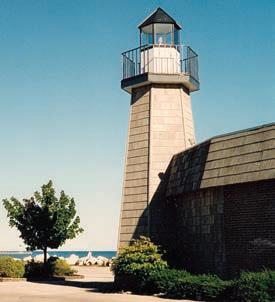
When it was time to upgrade, Milnor says Jeff and Laura Werner were able to take advantage of its trade-in rebate program for new equipment and upgraded technology in the process.
“We have always been hands-on operators,” says Laura Werner. “Getting great value from our prop-
erty and its equipment is one part of our longterm strategy to delivering exceptional guest experiences.”

Milnor says its rebate program rewards any customer who trades in their Milnor washer with 30 years or more of service for new Milnor replacements with a $300 check for each old machine.
“Milnor laundry equipment has a legendary reputation for durability, and this program allows our long-time customers to transition easily to our newer, more-modern units,” according to Rick Kelly, vice president of sales and marketing at Pellerin Milnor Corp.


Kelly adds that Milnor has processed rebates for 280 vintage machines since the program’s inception in 2003, totaling $84,000 in customer cash payments. ALN
that these are posted in the washroom, especially where you’re doing customer-owned goods, so that these symbols are understood.
If something comes through that’s never seen before, the No. 1 key to treating it right is following the wash-and-dry instructions that are found on the labels.”
Finally, Houvener says to measure results versus expectations.
“You can’t just assume; you have to have expectations,” he stresses. “Your customer has them. Measure the results versus them.”
FINAL THOUGHTS
Houvener concludes by recapping the essential factors for assessing and putting new textile products into use.
“Learn your business, know



your business,” he says. “Understand the science and the effects of the science on not only the new textiles that they might be looking at, but also your current ones.”
Consider all fabric options, shares Houvener. Understand how the different options are affected in, and affect, the system, and what makes some more attractive than others—the cause and effect.
“Recognize wise merchandise control,” he adds. “Keep it in the right place, at the right time and used for the right situation. Measure the return on investment.
“Finally, test, educate, follow the standard operating procedure and don’t assume.” ALN
24 NOVEMBER 2019 | AMERICAN LAUNDRY NEWS www.AmericanLaundryNews.com Contact us today and let us assist you with the right solution for your facility. 800.262.0203 | 805.549-9724 sales@ecotexozone.com | ecotexozone.com OZONE LAUNDRY LINE ENERGY EFFICIENT OZONE WATER TREATMENT SOLUTIONS Say Goodbye to Harsh Chemicals and Hot Water Use, and Hello to Cost Savings and Superior Wash Quality Replace expensive multi-step wash programs that use excess chemicals and hot water with our cold-water ozone systems that use the power of ozone for sanitation and let the savings begin! The EcoTex Laundry Line offers boutique to large commercial laundries eco-friendly laundry technology that turns cold water into activated oxygen, nature’s safest, most effective, disinfecting agent for superior wash quality and cost savings. ................................................................................................................. - ERADICATES SOIL & SUPER-BUGS - ENHANCED WASH QUALITY - EXTENDED LINEN LIFE - MORE LOADS IN LESS TIME - WHITER, FRESHER, SOFTER LINEN SUPERIOR DISINFECTION - 8 TO 18 MONTHS ROI - REDUCE UTILITIES - NO EXCESS CHEMICALS - REDUCE DRYING TIMES - LOW OPERATING COSTS FACILITY SAVINGS - COLD WATER WASH - NO EXCESS CHEMICALS - LESS DETERGENT - REDUCE HOT WATER - SMALL FOOTPRINT ECO-FRIENDLY ...................... ALN_3rd Page.indd 1 8/2/19 1:38 PM facebook/americanlaundrynews @AmericanLaundryNews LIKE our Facebook Page SHARE our Content FOLLOW us on Twitter COMMENT: What’s on your mind?
Continued
Page 18
from
Genuine
Parts warehouse celebrates 5 years with no lost-time accidents
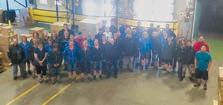
RIPON, Wis. — Alliance Laundry Systems reports that its Genuine Parts warehouse, located here, is celebrating five years with no lost-time accidents.


“One year with no lost-time accidents is quite the feat in the shipping world, but five is something only the best teams can accomplish,” says Brian Stark, global general manager of Genuine Parts.
The warehouse has 50 full-time employees who pick, pack and send 530 shipments per day, or 11,000 shipments per month.
That translates to 134,000 shipments per year, or 670,000 over five years.


“Safety is one of our top priorities, and it shows through this recent accomplishment by our talented team,” adds Stark. “I’m very proud of our Ripon team.”
Aramark honors 30 leaders, supporters with Hispanic Heritage Month 30/30 Award
PHILADELPHIA — Aramark, which provides food, facilities management and uniforms, has released the names of its Hispanic Heritage Month (HHM) 30/30 honorees, who are being recognized for their commitment to fostering a diverse and inclusive work environment that encourages workforce engagement and creates memorable consumer experiences.

The 2019 HHM 30/30 honoree class are members of Aramark’s IMPACTO employee resource group, whose mission is to provide impactful contributions to the business that builds a multicultural adept workforce, an inclusive workplace and awareness of Hispanic market place insights to support growth and consumer engagement.
“Aramark is committed to creating a workplace made up of team members with diverse backgrounds, cultures, beliefs and orientations,” says Jameel Rush, head of diversity at Aramark. “These 30 honorees help us further that commitment every day and are a valuable resource for Hispanic marketplace insights. We are proud to celebrate them today.”
This year’s HHM 30/30 honorees include:
• Allan Fernandes-Vice President, Safety & Risk, Corporate
• Ana Echeverria-Assistant Production Manager, Ameripride
• Anneth Camacho-Finance & Accounting Supervisor,
Uniform Services
• Christina Custus-Communication & Knowledge Management Senior Specialist, Corporate
• Deanna Perez-Food Service Supervisor, United Regional Healthcare System
• Debbie Malaczewski-Security and Risk Control Administrative Assistant, Corporate






• Denise Jimenez-Human Resources Manager, Lewisville Independent School District
• Dominique Chavarria-HR Manager, Uniform Services
• Eddie Noriega-Director of Business Development, K-12 East Region
• George Castro-HR Operations Manager, Uniform Services
• Hugo Montilla-Food Service Manager, UNC Chapel Hill
• Ileana Medina Otero-Chef Manager, University of North Carolina
• Jacqueline Rodriguez-Benefits Coordinator, Uniform Services
• Jahaziel Cano-Food Service Manager, Georgetown University
• Jennifer Kugler-Environmental Safety Senior Specialist, Corporate

• Jessica Roa-Manager, Customer Service Analytics, Uniform Services
• Joel Hernandez-General Manager, Camden City Public Schools
Alliance’s Genuine Parts warehouse team is made up of 50 employees who send 530 shipments per day. (Photo: Alliance Laundry Systems) www.AmericanLaundryNews.com AMERICAN LAUNDRY NEWS | NOVEMBER 2019 25 ADD OUR SKILLED LABOR TO YOUR LAUNDRY ROOM. (NO HIRING REQUIRED) To learn more about the power of TotalVue and request a complimentary Laundry Operating Cost Analysis ($350 value), VISIT UNIMAC.COM/ROI. With today’s hiring challenges, laundries are tasked to do more with less. UniMac ’s TotalVue system will help you maximize performance without adding staff. TotalVue provides a new level of visibility to your operation – with real-time reports that help identify ways to improve throughput and prevent downtime. That’s laundry genius. That’s UniMac. ALN_Tab_half.indd 1 1/28/19 10:47 AM See TRADE TICKER on Page 30
Classified Advertising







PARTS & SERVICE
In need of service and or parts for all your finishing equipment manufactured by BB&D, Lavatec, Washex, and Voss? Contact Michael @ 203-232-4004 or E-Mail me: mtenhave66@yahoo.com

WANTED
Growing company needs Aggressive Sales Engineer to visit customers and prospects in lucrative Northern New Jersey. We represent Milnor, Chicago and others. We offer excellent benefits and will relocate right candidate. Send cover & resume to jfoster@DirectMachinery.com

®
The Griffin Group, Inc. “Recruitment Specialist”
Need to FILL a position?
Call Deana Griffin 888-235-2365 www.thegriffingroup.cc deana@thegriffingroup.cc

OWNERSHIP OPPORTUNITY
PARTS FOR SALE
STATEMENT OF OWNERSHIP, MANAGEMENT, AND CIRCULATION
Magazines LLC, 650 West Lake St., Suite 320, Chicago, IL 60661-1036 Cook County. Charles Thompson, American Trade Magazines LLC, 650 West Lake St., Suite 320, Chicago, IL 60661-1036 Cook County. Bruce Beggs, American Trade Magazines LLC, 650 West Lake St., Suite 320, Chicago, IL 60661-1036 Cook County. Donald Feinstein, American Trade Magazines LLC, 650 West Lake St., Suite 320, Chicago, IL 60661-1036 Cook County. Nathan Frerichs, American Trade Magazines LLC, 650 West Lake St., Suite 320, Chicago, IL 60661-1036 Cook County. John S Suhler, 200 Long Neck Point Rd., Darien, CT 06820 Fairfield County. 13. Publication Title: AMERICAN LAUNDRY NEWS14. Issue Date for Circulation Data Below: September 2019
15. Extent and Nature of circulation: (average number of copies each issue during proceeding 12 months=”X”) (Number copies of single issue published nearest to filing date = Y”)(a)Total Number of Copies (Net press run): X=15,468,Y=15,678. b. Legitimate Paid and/or Requested Distribution (By Mail and Outside the Mail). (1)Outside County Paid/Requested Mail Subscriptions stated on PS Form 3541.(Include direct written request from recipient, telemarketing and Internet request s from recipient, paid subscriptions including nominal rate subscriptions, employer requests, advertiser’s proof copies, and exchange copies.) X= 9,828, Y=10,603. (2) In-County Paid/Requested Mail
Subscriptions stated on PS Form 3541.(Include direct written request from recipient, telemarketing and Internet requests from recipient, paid subscriptions including nominal rate subscriptions, employer requests, advertiser’s proof copies, and exchange copies.) X=0, Y=0. (3)Sales Through Dealers and Carriers, Street Vendors, Counter Sales, and Other Paid or Requested Distribution Outside USPS®: X=0, Y=0. (4)Requested Copies Distributed by Other Mail Classes Through the USPS (e.g. First-Class Mail®): X=0, Y=0. (c) Total Paid and/or Requested Circulation (Sum of 15b (1), (2), (3), and (4)):X=9,828, Y=10,603. (d) Nonrequested Distribution (By Mail and Outside the Mail). (1)Outside County Nonrequested Copies Stated on PS Form 3541 (include Sample copies, Requests Over 3 years old, Requests induced by a Premium, Bulk Sales and Requests including Association Requests, Names obtained from Business Directories, Lists, and other sources): X=5,352, Y=4,565. (2)In-County Nonrequested Copies Stated on PS Form 3541 (include Sample copies, Requests Over 3 years old, Requests induced by a Premium, Bulk Sales and Requests including Association Requests, Names obtained from Business Directories, Lists, and other sources): X=0, Y=0. (3)Nonrequested Copies Distributed Through the USPS by Other Classes of Mail (e.g. First-Class Mail, Nonrequestor Copies mailed in excess of 10% Limit mailed at Standard Mail® or Package Services Rates): X=0, Y=0. (4)Nonrequested Copies Distributed Outside the Mail (Include Pickup Stands, Trade Shows, Showrooms and Other Sources): X=32, Y=7. (e)Total Nonrequested Distribution (Sum of 15d (1), (2), (3) and (4)): X=5,384, Y=4,572. (f)Total Distribution (Sum of 15c and e): X=15,213, Y=15,175. (g)Copies not Distributed (See Instructions to Publishers #4, (page #3)):X=255, Y=503. (h) Total (Sum of 15f and g): X=15,468, Y=15,678. (i)Percent Paid and/or Requested Circulation (15c divided by f times 100): X=64.61%, Y=69.87%. 16. Publication of Statement of Ownership for a Requester Publication is required and will be printed in the November 2019 issue of this publication. 17. Signature and Title of Editor, Publisher, Business Manager, or Owner: I certify that all information furnished on this form is true and complete. I understand that anyone who furnishes false or misleading information on this form or who omits material or information requested on the form may be subject to criminal sanctions (including fines and imprisonment) and/or civil sanctions (including civil penalties): Charles Thompson, Date 9/12/2019
26 NOVEMBER 2019 | AMERICAN LAUNDRY NEWS www.AmericanLaundryNews.com
PARTS, PARTS, PARTS Huge stock of parts for most laundry equipment & boilers. Also traps, valves and lubricants. Overnight delivery. Steiner-Atlantic, 800-333-8883 Fax: 305-751-8390 parts@steineratlantic.com www.steineratlantic.com
Regional Sales Managers Ellis Corporation, Itasca, IL is looking for Regional Sales Managers. Come and join a great team. For more info email: hr@elliscorp.com
Profitable 40+ year 4/5 route linen and uniform supply. Opportunity for growth. Located in beautiful upper midwest with beaches and many recreational opportunities. Owners looking to transition into retirement. Looking for individuals or team with proven management skills. Buy owners out with profits from operations. Reply in strict confidence to: laundryownershipopportunity@ gmail.com
EQUIPMENT FOR SALE
NEW FOLDERS & SELF CONTAINED IRONERS 68” - 138” Wide WWW.JBILAUNDRYFOLDER.COM AMKO AMERICA INC. Parts, Supplies, Service Remanufactured Finishing Equipment AmkoAmerica@gmail.com 561-863-9696 DISTRIBUTOR OFFERINGS DISTRIBUTOR OFFERINGS 2019 CLASSIFIED RATES: One- to fivetime rate: $2.75 per word, boldface $2.80 per word. Minimum charge: $25.00 per ad. Call or write for our three- and 12-time rates. If box number is used, add cost of five (5) words. Display classified rates are available on request. All major credit cards are accepted. DEADLINE: Ads must be received by the 1st of the preceding month. For example, for a June ad, the closing date is May 1st. PAYMENT FOR CLASSIFIED ADS: Must accompany order. DESCRIPTION FOR NEW OR USED LAUNDRY EQUIPMENT, DM IS YOUR SOURCE FOR ALL YOUR NEEDS For Pricing call Ron Hirsch 516.938.4300 • 516.315.7426 Hicksville, NY • www.directmachinery.com 2012 Chicago GO16X136F Ironer 2007 Chicago TriStar 32PCS Gas Ironer 2009 Chicago Skyline S-20 Folder 2006 Chicago Skyline S17-2000 Folder 2005 Chicago Air Chicago Small Piece Folder 2017 B&C SI-275 275LB Soft Mount Washer 2000 Milnor 36026Q4G 100LB Washer 2006 Milnor 36021V5J 80LB Washer 2012 Milnor 30022T5X 60LB Washer 2012 Milnor 3022V6J 60LB Washer 2009 Unimac UW100T3V 100LB Washer (Qty. 2) 2012 Unimac UW60K12 60LB Washer 2011 Speed Queen SC80HNF 80LB Washer 2009 Unimac 120LB Gas Dryers (Qty. 3) 2019 Speed Queen 120LB Gas Dryer 2006 IPSO 120LB Gas Dryer (Qty. 2) 2013 Cissell 75LB Soft Mount Washer 2012 ADC 758 Gas Dryer 2015 Unimac 75LB Dryer (Qty. 2) 2014 Forenta 60X24 Drapery Press Rema 18X48 Stainless Return Tank A.O. Smith 399,000 BTU Water Heater View photos of entire inventory at www.washburnmachinery.com 800-245-8425 Keepin’ it clean for over 65 years! POSITIONS AVAILABLE POSITIONS AVAILABLE 2011 Sharp T7 Bagger, Single Lane 2014 PDPI Mat Roll Machine 2003 Milnor G3 CBW, 150lb, 4 Mod 2003 Milnor Centrifugal Extractor 2008 Milnor 6458 - 300lb Tunnel Dryer 2009 Chicago Imperial 36 Gas Ironer 2011 Chicago Imperial 232-136 Gas Ironer 2015 Felins Pak Tyer 2000-16 2012 Milnor MLG78 - 75lb Gas Dryer 2008 Milnor MLG122 - 120lb Gas Dryer 2012 TEA Stack Economizer 2000 Braun 400lb OP w/ Inverter 2012 Milnor 40lb Washer 2011 Milnor 60lb Washer 2008 Jensen Logic Feeder 2011 Air Chicago 2006 Braun SPFMRF 2005 Braun Theta EXPECT EXCELLENCE Celebrating 20 Years! www.ineedjpequipment.com 800.925.3236 Stanco Industries, Inc. Serving The Textile Trades Since 1970 800-932-3769 k for Mike or Deb KEEPING IT GREEN SINCE 1970 WE ARE LOOKING FOR THE FOLLOWING EQUIPMENT: WASHING • DRYING • FOLDING FEEDING • IRONING • FINISHING MATERIAL HANDLING • BOILERS CONTINUOUS BATCH WASHING STACKERS • CART DUMPERS DON’T BE LEFT WITHOUT POWER Emergency Generators Available 50KW to 1000KW Natural Gas & Diesel Please visit our updated website: www.stancoind.com E-mail: buyer@stancoind.com Atlas Copco 25hp Rotary Compressor Electrolux Gas Ironer 19” Primary Folder Milnor 42026V6J – 135lb Reconditioned Washer Tristar 28 w/ Stacker & OPL Feeder Reconditioned Air Chicago – 2011 Unipress Compact Rotary Double Buck Lapauw2 Roll32 Self Contained Gas Thermal Ironer Wascomat EXSM 655 Washer (1) Reconditioned Ellis 900lb Dumping Side Loader Washer (1) Unimac Soft Mt Reconditioned UF85 Wascomat Washer (1) Reconditioned Milnor 36026V5J – 100lb Washer – New Bearing (2) Reconditioned Skyline Mini (2009) with Stacker Jensen Reconditioned 2-Roll 36 Steam Ironer Washex FLS600 – 135lb Soft Mount Washer, New Bearing Reconditioned Milnor 36021V5J – 80lb Rigid Mt Washer, New Bearing (1) Reconditioned Milnor 60lb Washer 30022F8J Soft Mt (1) Reconditioned Milnor 72072 – 500lb System Dryers (2) For Milnor 250lb Tunnel Sharper 100” Steam Ironer 12” Roll Reconditioned ADC 236 Stack Dryers 30lb (10) Reconditioned Electrolux Gas Ironer 19” Roll, 126” length with Folder Reconditioned Challenge Pacesetter 400 Gas Dryer w/lint collector Recond. ACQUIRED FROM LINEN PLANT CLOSING 1- Skyline Single lane Folder with Stacker 1- Air Chicago (2011) 1- Unipress CDB Double Buck & ABS Unipress Rotary Double Buck/Sleever Recond. 2- MLS170 – 175lb Steam Dryers (2006) 3- M3131SLS – 30lb Stack Steam Dryers (2006) 1- TriStar 28 Gas Ironer/Folder/Feeder 1- Lavatech Small Piece Folder 1. Publication Title: AMERICAN LAUNDRY NEWS 2. Publication Number: 1091-9201 3. Filing Date:9/12/19. 4. Issue Frequency: Monthly 5. Number of Issues Published Annually: 12 6. Annual Subscription Price: $46.00.7. Complete Mailing Address of Known Office of Publication: American Trade Magazines LLC, 650 West Lake St., Suite 320, Chicago, IL 60661-1036 Cook County. Contact Person: Charles Thompson, 312-361-1700. 8. Complete Mailing Address of Headquarters or General Business Office of Publisher: American Trade Magazines LLC, 650 West Lake St., Suite 320, Chicago, IL 60661-1036 Cook County.9. Full Names and Complete Mailing Addresses of Publisher, Editor, and Managing Editor. Publisher: Charles Thompson, American Trade Magazines LLC, 650 West Lake St., Suite 320, Chicago, IL 60661-1036 Cook County. Editor: Matt Poe, American Trade Magazines LLC, 650 West Lake St., Suite 320, Chicago, IL 60661-1036 Cook County. Managing Editor: Bruce Beggs, American Trade Magazines LLC, 650 West Lake St., Suite 320, Chicago, IL 60661-1036 Cook County.10. Owner: American Trade
EQUIPMENT FOR SALE


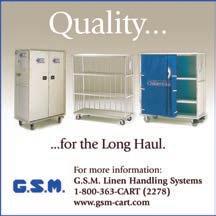










































www.AmericanLaundryNews.com AMERICAN LAUNDRY NEWS | NOVEMBER 2019 27 Source Directory A convenient guide to sources of products and services APPAREL FINISHING CARTS, TRUCKS & BASKETS Source Directory listings in American Laundry News are sold on an annual basis at the following rates: All Major Credit Cards Accepted 2019 Listings Regular Boldface All Caps Four Line Listing per Year $925 $1,160 $1,160 Display and additional line rates available upon request CARTS, TRUCKS & BASKETS CARTS, TRUCKS & BASKETS ● Folder Stackers ● Stacker Hybrid ● Tunnel Finishers ● Cart Sanitizers ● Executive Pressing ● ● ● ● ● ph: 704.483.9316 sales@leonardautomatics.com www.leonardautomatics.com Financing Available Laundry/Bushel Trucks • Exchange/Flare/Security Carts • Spring Lifts Diversified Plastics, Inc. South Carolina & Georgia • 800.768.7636 sales@dpiroto.com • dpiroto.com On-Time Delivery & Quality Service! BEST LAUNDRY TRUCKS & CARTS BEST LAUNDRY TRUCKS & CARTS M c C LURE INDUSTRIES, INC. 800-752-2821 • www.mcclureindustries.com email: kim@mcclureindustries.com Sani-Trux is the only molded cart to pass rigorous independent laboratory testing for NFPA fire codes Made of durable fiberglass making the cart life at least twice that of a poly cart Easy to maneuver even in tight spaces Built with quality components to last years longer than other carts Visit our website for other models and avaliable options. We sell direct to all parties! M.I.T. POLY-CART 211 CENTRAL PARK WEST, NEW YORK, NY 10024 800-234-7659, FAX: 212-721-9022 WWW.MITPOLYCART.COM l-800-275-2436 l-800-275-2436 maxi-movers.com Email:sales@maxi-movers.com FLARE TRUCKS Designed for easy loading / unloading of bulky items and feature steel reinforced extra-strength sides. And our 10 factories nationwide reduce delivery times and cost. M2440 Double wall flange rib and 6 casters, shown with Spring Lift Platform FIBERTECH SHELF CARTS 800.304.4600 We Create Environmentally Responsible Solutions www.FIBERTECHINC.net SUPORTING YOUR BUSINESS iN MORE THAN ONE WAY. 1 ST C L AS S C ARTS F OR 1 ST C L AS S P RO PE R TIES Lake Wales, FL 33859 Toll Free: 800.683.4116 Local: 863.638.3200 Fax: 863.638.2443 Visit DuraCast.com to explore what Dura-Cast can do for you!






























28 NOVEMBER 2019 | AMERICAN LAUNDRY NEWS www.AmericanLaundryNews.com Source Directory A convenient guide to sources of products and services FLATWORK IRONERS C & W EQUIPMENT (800) 443-3573 FLATWORK IRONER SPECIALISTS REMANUFACTURED IRONERS: Super Sylon Sylon Hypro’s Super Pro Jensen SS700 SS800 Ultima Lavatec UPGRADE KITS: Chain Drive Conversion Vacuum Systems Herringbone Conversion Canopies Inverters Side Covers Roll Springs Jensen Drives SUPPLIES: Aprons Pads Covers Belts Waxes Cleaners PARTS/REPAIRS: All Brands New/Refurbished/Hard to Find COMMITTED TO EXCELLENCE Pellerin Milnor Corp. P.O. Box 400, Kenner, LA 70063 504-467-9591, Fax: 504-468-3094 www.milnor.com DRYERS – 100 POUNDS OR MORE Pellerin Milnor Corp. P.O. Box 400, Kenner, LA 70063 504-467-9591, Fax: 504-468-3094 www.milnor.com CLEAN CYCLE SYSTEMS 960 Crossroads Blvd., Seguin, TX, 78155 800-826-1245 • CCsystems@tqind.com www.cleancyclesystems.com DRYERS – 100 POUNDS OR LESS LINT COLLECTORS & FILTERS MAT ROLLERS DRYER BOOSTER & EXHAUST FANS Gardner Machinery Corporation P.O. Box 33818, Charlotte, NC 28233 Ph.: (704)372-3890; Fax: (704)342-0758 www.gardnermachinery.com MATERIAL HANDLING / CONVEYORS www.energenics.com ENERGENICS CORPORATION TALK TO OUR DESIGN AND ENGINEERING STAFF ABOUT YOUR NEEDS 1470 Don St. • Naples, FL 34104 • 800-944-1711 ›› Our In-Line Lint Filter mounts inside, saves space! ›› OPL Duct Mounted Lint Filters 1,000 to 2,700 CFM ›› Fiberglass or Stainless Steel Dry Filters ›› Hundreds Sold Annually Source Directory listings in American Laundry News are sold on an annual basis at the following rates: All Major Credit Cards Accepted 2019 Listings Regular Boldface All Caps Four Line Listing per Year $925 $1,160 $1,160 Display and additional line rates available upon request HEALTH CARE LINEN TRANSPORT CARTS “In-House” or “Over-The-Road Transport” Ergonomic Aluminum - Tough Fiberglass – Ultimate Stainless ALL SIZES & CUSTOM C APABILITIES 800-826-1245 | www.tqind.com | TQcarts@TQind.com America’s #1 Trusted Source Since 1961! HEALTHCARE LINEN TRANSPORTS www.energenics.com ENERGENICS KARTWASHERS FULLY AUTOMATIC KARTWASHER PREMIER W/TOUCHPAD 1470 Don St. • Naples, FL 34104 • 800-944-1711 Designed to wash and sanitize all popular laundry carts • Automatic two minute cycle • Dries and sanitizes • Minimum water useage Concentrates wash effectiveness on the cart interior Fast automatic washing, sanitizing and drying insure optimum cleaning • 15 second detergent wash and sanitizing rinse cycle • Adjustable automotive car wash style drying 1116aln_Energenics Cart Washers SD.indd 1 9/27/16 3:30 PM OPL-Series DLF-500 Lint Lasso 1,000-10,000 CFM Established: 1991 4,000-35,000 CFM Established: 1985 4” to 18” Duct Established: 2011 www.cleancyclesystems.com • 800 . 992 . 0697 ELECTRONIC REPAIRS CART-WASHING SYSTEMS What Every Laundry Needs In A Cart Washer: M c C LURE INDUSTRIES, INC email: kim@mcclureindustries.com 800-752-2821 • www.mcclureindustries.com A cart washer that works continuously for 15-20 years. The ability to install your cart washer in a cross-contamination barrier wall. A cart washer that really, truly cleans each cart of bio-contaminents inside and out. One that uses existing utilities - no remodel costs. Time selectable efficient cycles that use a minimum amount of water.
Pellerin Milnor Corp. P.O. Box 400, Kenner, LA 70063 504-467-9591, Fax: 504-468-3094 www.milnor.com
Pellerin Milnor Corp. P.O. Box 400, Kenner, LA 70063 504-467-9591, Fax: 504-468-3094 www.milnor.com












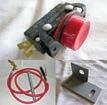
Pellerin Milnor Corp.
P.O. Box 400, Kenner, LA 70063 504-467-9591, Fax: 504-468-3094 www.milnor.com
Pellerin Milnor Corp.
















P.O. Box 400, Kenner, LA 70063 504-467-9591, Fax: 504-468-3094 www.milnor.com





www.AmericanLaundryNews.com AMERICAN LAUNDRY NEWS | NOVEMBER 2019 29 Source Directory A convenient guide to sources of products and services PARTS PARTS & SUPPLIES CINCINNATI LAUNDRY EQUIPMENT We stock all the parts you need! We have something for everybody! Parts for All Major Manufacturers 2648 Spring Grove Avenue Cincinnati, OH 45214 Phone: 513-542-5000 • Fax: 513-542-5022 www.cincinnatilaundry.com cle@cincinnatilaundry.com Your #1 AJAX Source! AJAX • CISSELL LAVATEC • ALLIANCE IPSO • HUEBSCH JENSEN HYPRO/SUPER SYLON HOFFMAN • VOSS PERMAC
– CONTINUOUS BATCH
– 100 POUNDS OR LESS WASHER-EXTRACTOR – 100 POUNDS OR MORE
WASHERS
WASHER-EXTRACTOR
SMALL-PIECE FOLDERS
PRESSES – EXTRACTION CONTACT US TO BOOK YOUR AD TODAY! CLASSIFIEDS@ATMAGS COM Source Directory listings in American Laundry News are sold on an annual basis at the following rates: All Major Credit Cards Accepted 2019 Listings Regular Boldface All Caps Four Line Listing per Year $925 $1,160 $1,160 Display and additional line rates available upon request Company Page Company Page INDEX OF ADVERTISERS A.L. Wilson Chemical Co. 9 ADI American Dawn 5, 17 ClearWater Tech 24 Direct Machinery Sales Corp. 14-15, 26 EDRO Corp. 23 GA Braun 21 Girbau Industrial 7 J.P. Equipment 26 Kannegiesser ETECH 22 Lavatec Laundry Technology 32 Maytag 19 Monarch Brands 31 Norchem Corp. 11 Pellerin Milnor 3 Riegel Linen 13 Stanco Industries 26 The Griffin Group Inc. 26 TRSA ...........................................................................................................20 UniMac 25 Washburn Machinery 26 ///////////////////////////////////////////////////////////////////////////////////////////// (844) 447-5559 // www.maxi-press.us PRESS MEMBRANES LAUNDRY SPARE PARTS Get the info you need online... www.AmericanLaundryNews.com
• Lorena De Leon-Customer Service Supervisor, Baylor University
• Lynn Farrell-Vice President, Human Resources, Corporate
• Margaret Rodriguez-Marketing Strategy Manager, Corporate
• Maria Martinez-Food Service Worker, Indian Hills High School
• Martina Maldonado-Lead Food Service Worker, Western Carolina University
• Mayra Velazquez-Administrative Assistant, Chicago Public Schools
• Melissa Garza-Administrative Assistant, Christus Spohn Shoreline
• Natily Santos-Director, Supplier Diversity & Strategic Sourcing, Corporate
• Paul Sizer-Vice President, Finance International, Corporate
• Rudy Garza-Executive Catering Chef, Baylor University
• Vivian Siewert-Lodge Manager, Far View Lodge, Mesa Verde National Park
• Yashira Tirado Rosario-Supply Chain Source to Pay Specialist, Corporate
Winners were nominated by co-workers, managers and business leaders and were celebrated at a special reception at the conclusion of Hispanic Heritage Month in midOctober.
Aramark says its diversity and inclusion efforts have been recognized by many notable organizations like the Human Rights Campaign, Diversity Inc., Black Enterprise magazine, CAREERS & the disABLED magazine and LATINO magazine.
UniFirst honored by two organizations for upholding workplace diversity
WILMINGTON, Mass. — UniFirst Corp., a provider of customized work uniform programs, corporate attire and facility service products, reports it has been recognized again for its commitment to diversity from two different organizations: 2020 Women on Boards and TRSA, the association for linen, uniform and facility services.
2020 Women on Boards is a nonprofit national campaign started in 2010 to help increase the percentage of women on U.S. company boards to 20% or greater by the year 2020. This is the third consecutive year that UniFirst was named a winning company by the group. Winning companies are recognized for championing diversity with their boards of directors by having 20% or more of their board seats held by women.
According to 2020 Women on Boards,
the campaign has already exceeded its 20% national campaign goal and is further exceeding those numbers. The 2018 Gender Diversity Index of Fortune 1000 Companies reveals that women now hold 22% of the board seats of publicly traded companies, compared to 20.4% in 2017.
During TRSA’s annual leadership and awards dinner, UniFirst was honored for implementing a diversity program that involves providing on-site English as a second language classes for employee Team Partners.
UniFirst currently offers these free weekly classes after work for the diverse workforce at several of its locations to make it easier for workers to attend class right after work. The company hopes to continue expanding this program into other locations across North America.
“These honors underscore UniFirst’s commitment to good corporate governance, which includes embracing and maintaining a diverse work force,” says Steven Sintros, president and CEO of UniFirst.
“Having a diverse range of people across gender, age and cultural background is invaluable to today’s businesses. With so many different and diverse minds working together, we are able to offer best-in-class services and solutions to our expanding customer base.”
Aramark names Zillmer CEO

PHILADELPHIA — Aramark, a provider of food, facilities management and uniforms, reports that John J. Zillmer will return to the company as chief executive officer, effective immediately. He will also become a member of the company’s board of directors.
Zillmer previously spent 18 years at Aramark. Under his leadership as president of global food and support services, Aramark says it experienced significant growth, ultimately becoming the largest food management provider in North America.
Following his prior tenure at the company, Zillmer served as chairman and CEO of Allied Waste Industries, where his transformation of Allied Waste became an industry benchmark. Zillmer also led Univar, a global chemical and ingredients distributor, as CEO and executive chairman, where he advanced corporate culture and drove substantial operational improvements.
“I am extremely excited about the opportunity to rejoin Aramark at such a dynamic time in the company’s history,” Zillmer says. “I look forward to working closely with the board and the Aramark team to drive growth and value for our employees, customers, partners and shareholders.”
The company also reports that five new independent directors will join the board. Susan Cameron, former chairman and CEO of Reynolds American Inc.; Karen King, former executive vice president and chief field officer of McDonald’s Corp.; and Art Winkleblack, former executive vice president and chief financial officer of H.J. Heinz Co. will join immediately, and Greg Creed, current CEO of Yum! Brands Inc., whom the board will nominate and recommend for election to the company’s board at the company’s 2020 Annual Meeting.
In addition, Paul Hilal, founder and CEO of Mantle Ridge LP, the company’s largest shareholder, will become vice chairman. Aramark’s current non-executive chairman, Stephen Sadove, will remain as chairman of the board.
Four existing Aramark directors, Pierre-Olivier Beckers-Vieujant, Lisa Bisaccia, Patricia Morrison and John Quelch, have retired from the board effective as of the appointment of the new directors. Aramark’s board will be comprised of 11 directors following the election of Greg Creed at the
company’s 2020 Annual Meeting. The office of the chairman has been dissolved.
“John Zillmer is an outstanding leader with a proven record of accelerating business performance and fostering a strong corporate culture. We are thrilled he is returning to lead Aramark as chief executive officer,” Sadove says. “Additionally, we appreciate Mantle Ridge’s thoughtful approach to the long-term success of Aramark and welcome this opportunity to partner with Paul Hilal, a true ownersteward.
“I would also like to thank the retiring directors for their contributions and years of dedicated service, and to extend a welcome to the new directors, whom we are delighted are joining us.”
“I look forward to working closely with John, Steve and the board to further our common purpose: helping Aramark most fully realize its potential, and drive value for all of its stakeholders,” Hilal says. “I also want to thank the Aramark directors, including those departing the Board, for the productive engagement that facilitated this positive outcome.”
Unitex expands summer concert series for senior living facilities

ELMSFORD, N.Y. — This summer, Unitex reports it continued to increase senior citizens’ access to the arts through an expansion of its sponsored concert series across the Northeast region.
The privately owned healthcare laundry company has produced these concerts for nursing homes and senior living facilities across New York City, Long Island and Westchester County as a way of extending its brand promise to care for the health and well-being of residents and patients.

The company says it is planning to expand to reach a greater portion of their service area, which includes New York, New Jersey, Pennsylvania, Delaware, Connecticut,
Massachusetts and Rhode Island.
This year marks the second annual concert series with featured performances by a diverse range of musicians, including styles ranging across soul, blues, jazz, folk, country, pop, swing, rock, classical, opera and more.
Unitex says residents’ positive response to these concerts prompted the company to add additional dates and locations to its 2019 season.
“Following the fantastic response to last year’s concert series, we expanded this year’s season to provide more senior citizens across New York with high quality, contemporary entertainment,” says Seth Gershman, marketing and communications director of Unitex. “It has been such a treat to see the response from residents and staff to the performances, with many people dancing and singing along to the shows.
“Besides fulfilling our brand promise of ‘A Clean Start to Every Day,’ we can’t think of a better way to contribute to local seniors’ happiness than with live music. We’re looking forward to scheduling even more shows to extend the 2019 season, and to enlarging this series for the future.”
“Unitex is always looking for ways to give back to our partner facilities who do such a tremendous job caring for the well-being of their residents,” says David Potack, vice president of Unitex. “We are always happy to help enhance the residents’ experience in any way we can, and are thrilled that the concert series has been received so well.”
30 NOVEMBER 2019 | AMERICAN LAUNDRY NEWS www.AmericanLaundryNews.com
ALN November 19-20 B&C Technologies Service School Panama City Beach, Fla. Info: 850-249-2222 19-21 TRSA 8th Annual Healthcare Conference & Exchange San Diego, Calif. Info 703-519-0029 21 Association for Linen Management Webinar: Laundry Models of the Future Richmond, Ky. Info: 859-624-0177 ALN Calendar Continued from Page 25 Trade Ticker
Bobby Harden and Les Kurtz included residents in the performance at the United Hebrew Home in New Rochelle, N.Y. (Photo: Unitex)
Zillmer
SmartRags dispenser box contains 50 12”x12” microfiber cloths with precision cut seamless edges. Color-coding reduces the threat (and perception) of cross-contamination. Smaller and more compact than regular microfiber cloths, SmartRags are ideal for utility carts, corporate supply rooms, automotive shops, and break rooms.





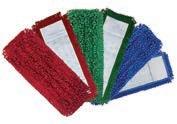
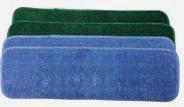
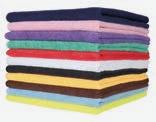

FOR: 35 Gram Microfiber cloths We’re HOLDING THE LINE! 18” MESH BACKED Pocket 95¢ MICROFIBER FLAT MOP? Value priced microfiber that lasts for 500 washes. The original and best 35 gram microfiber with hand-sealed edges that last longer than machine-cut microfiber. 100% microfiber mesh backed mops for a stretched snug fit. Mesh construction dries quicker than traditional canvas pocket mops. The 18” Mop fits existing pocket mop frames. These foam-filled microfiber flat-mops clean as well as microfiber-filled flat mops and are perfect for high-loss environments. Ask Us About Distributor Pricing monarchbrands.com • info@monarchbrands.com CALL 215-515-2984 TO JOIN THE LINE TODAY! STILL 35ç Only $2.99 Just $9.75 It’s TRUE! ª ª ª ª ª Are YOU ge ing a PRICE INCREASE on MICROFIBER? OUR BUSINESS IS BUILT ON LONG TERM RELATIONSHIPS AND NOT SHORT TERM TARIFFS. A Smarter Tool for Every Task Industrial and automotive shops need better lint-free options to wipe away heavy grime and oil. Office environments value the compact consumer-friendly packaging. Employees are also prone to wipe-and-toss rather than launder cloths. Hospital Acquired Infections (HAIs) so cloths are often discarded after one use. Healthcare facilities are hyper sensitive to
PERFECT





 BY DEANA GRIFFIN
BY DEANA GRIFFIN



































































































 BY MIKE HAND
BY MIKE HAND








































































































































